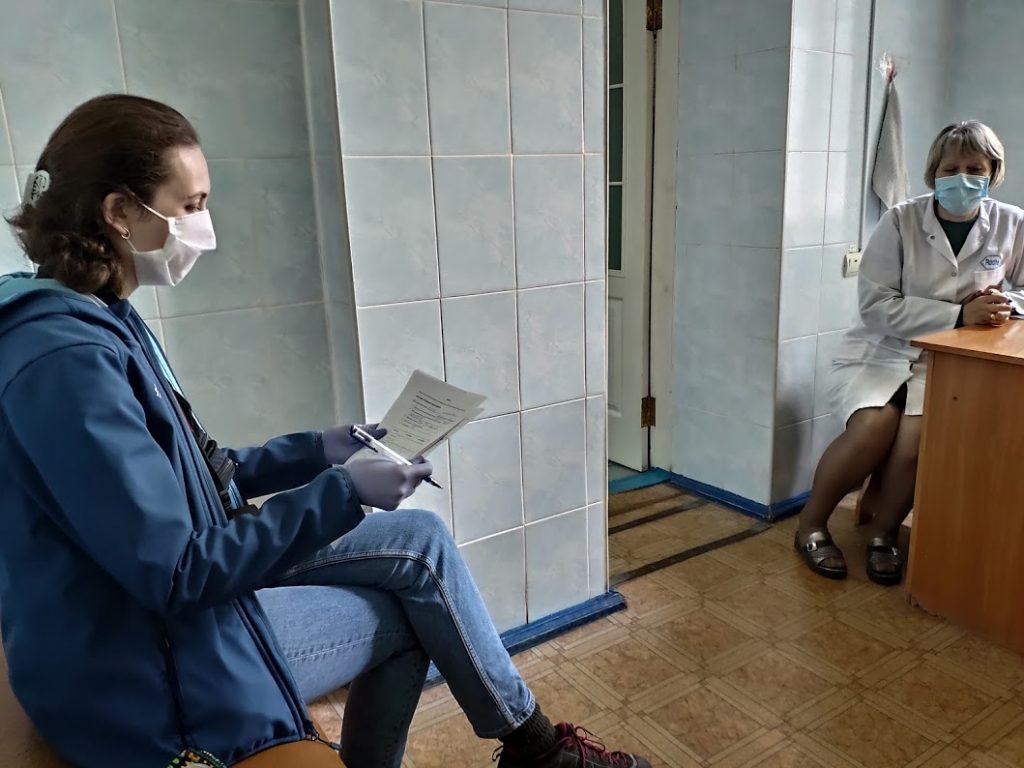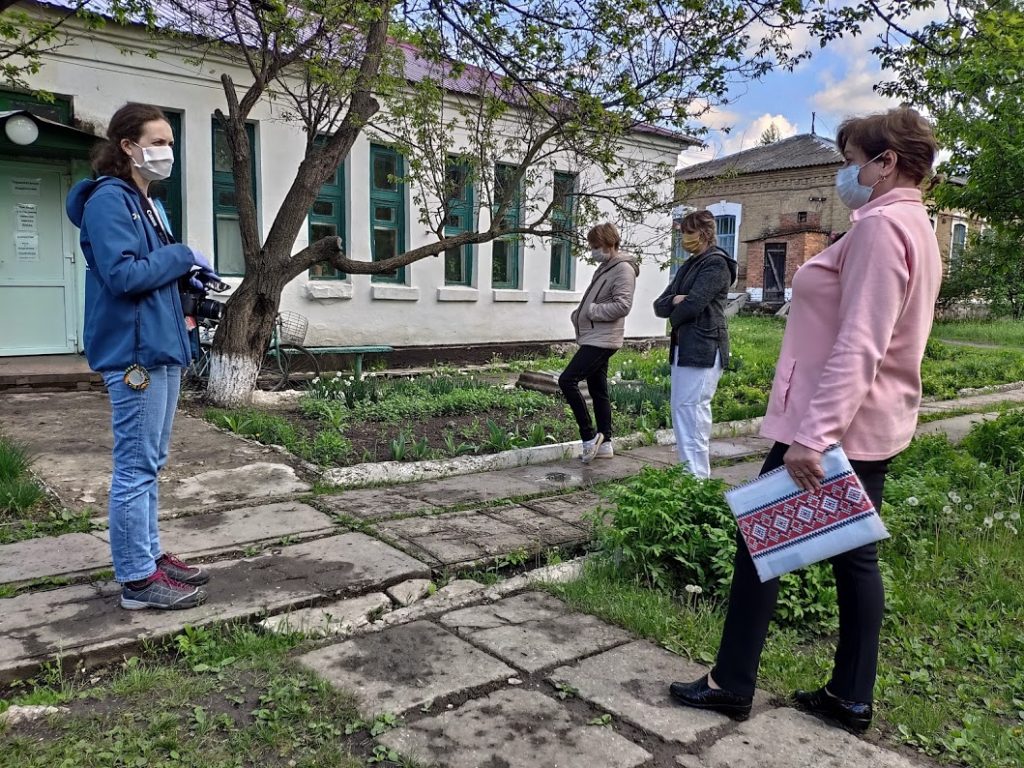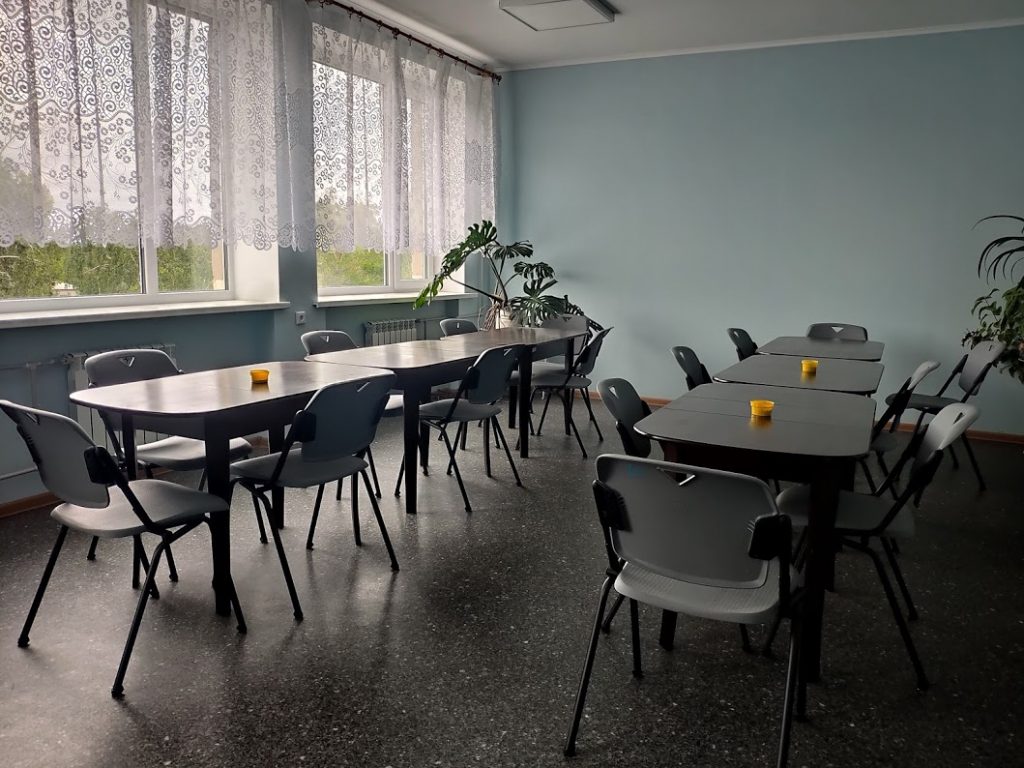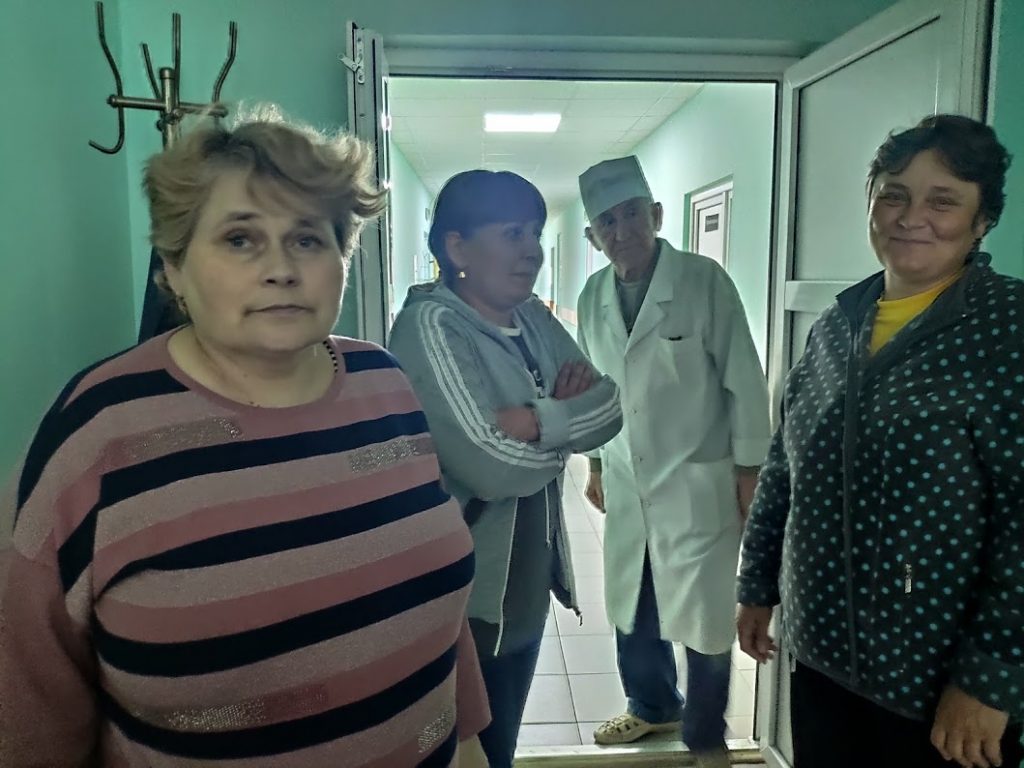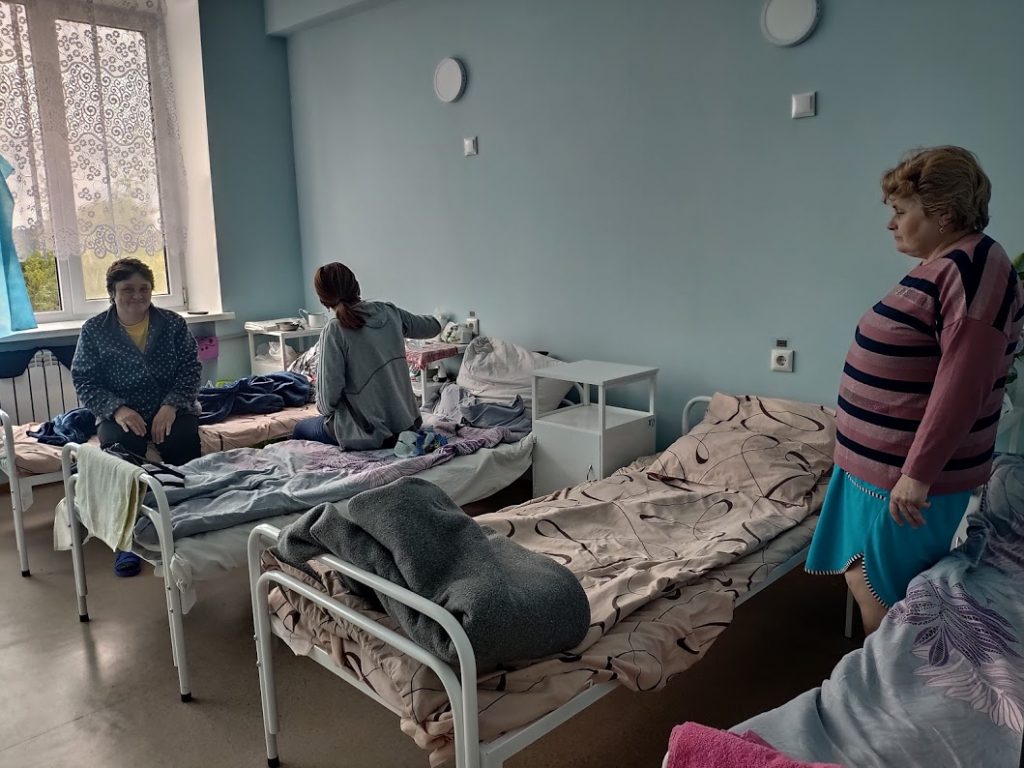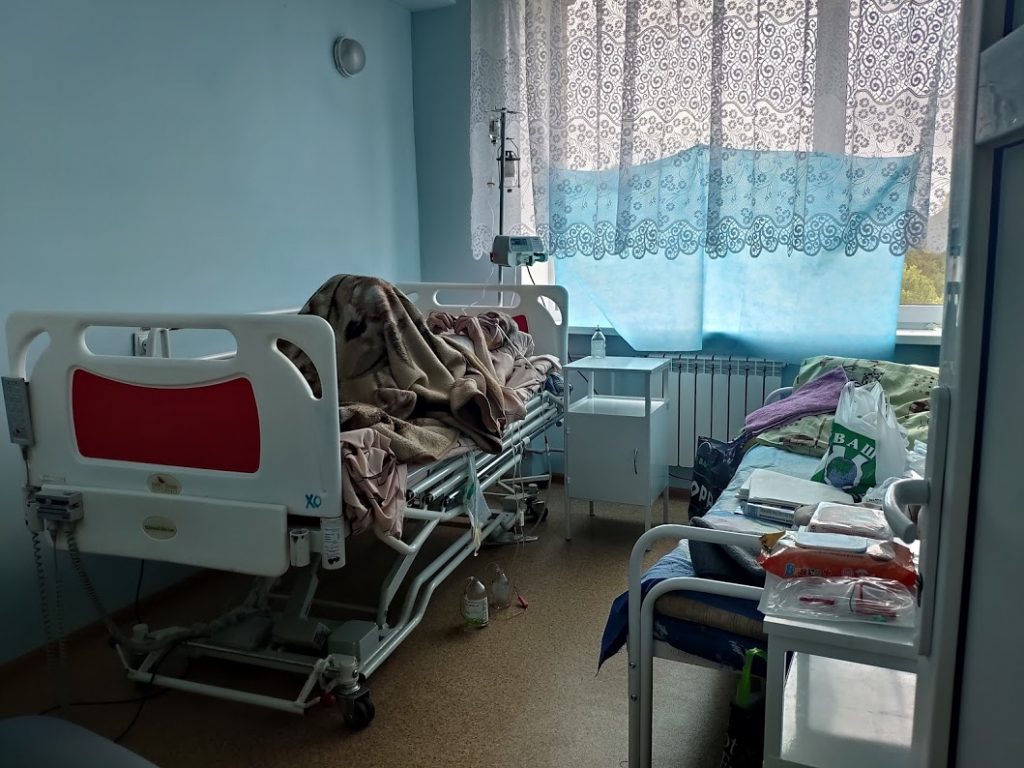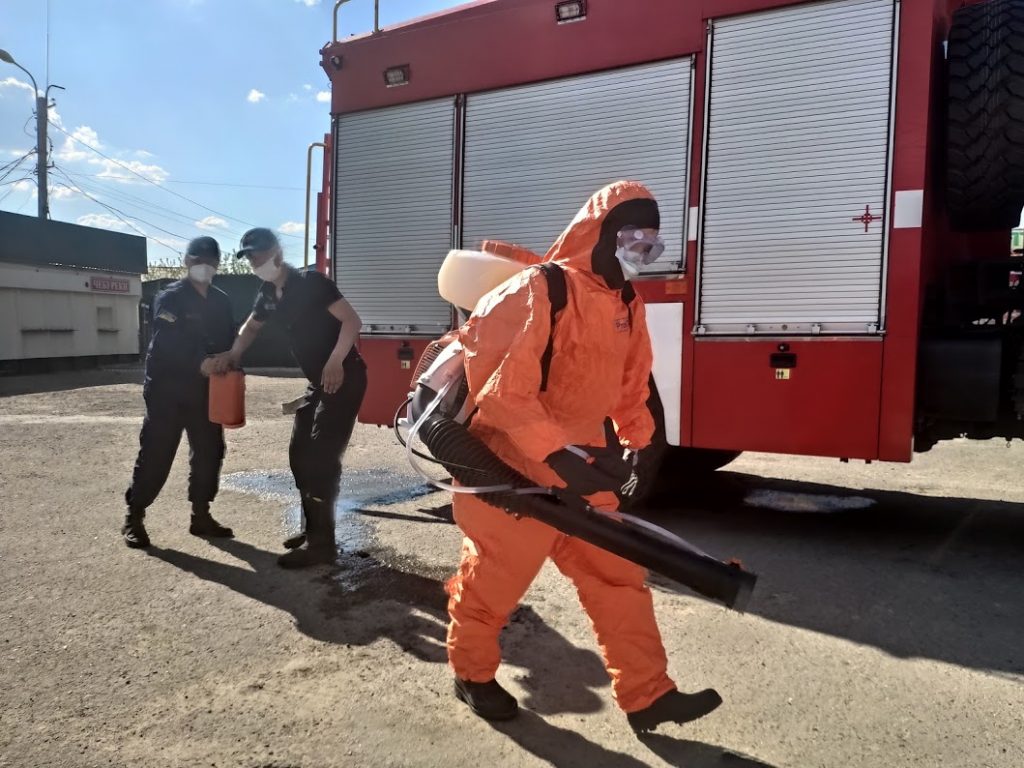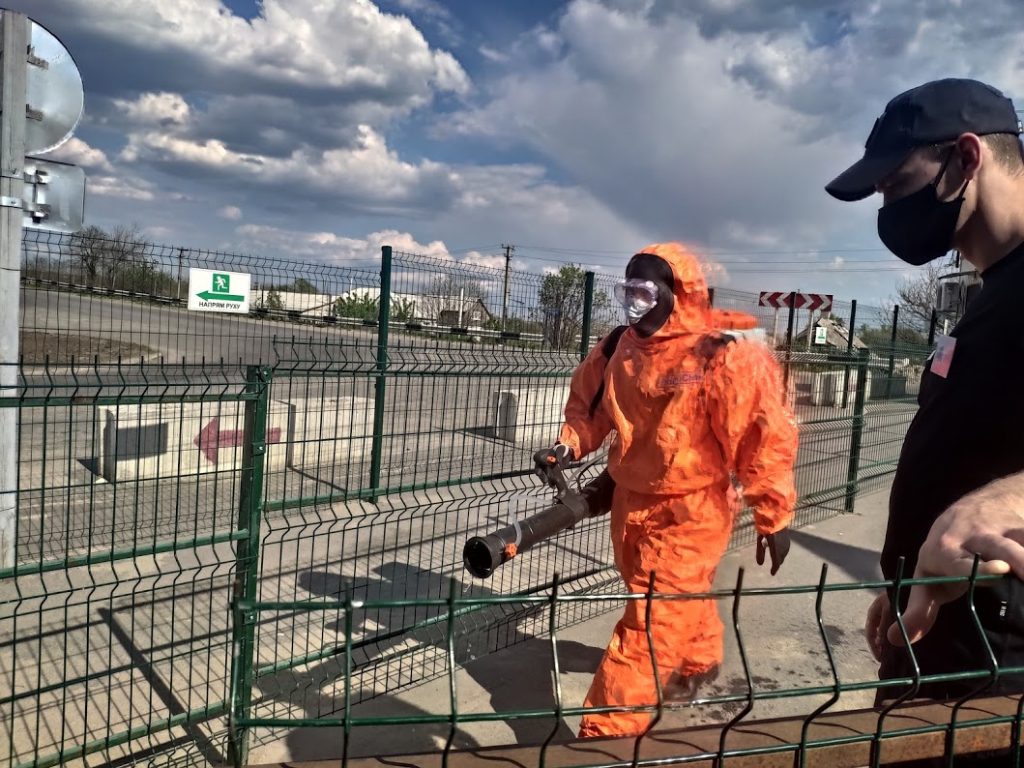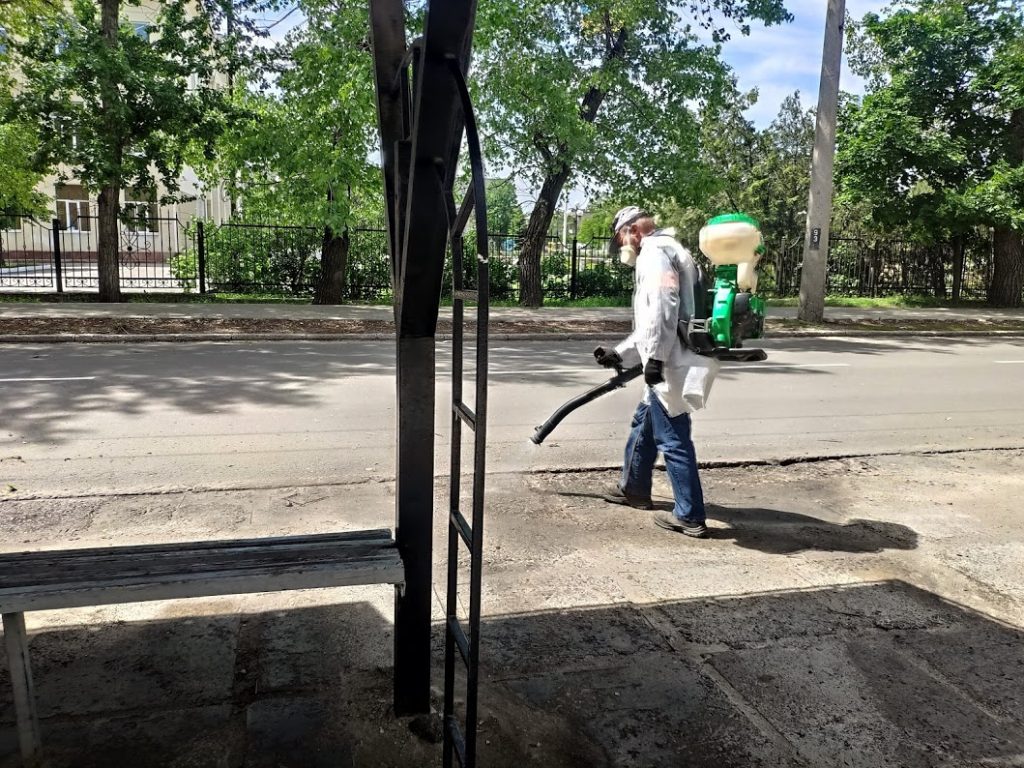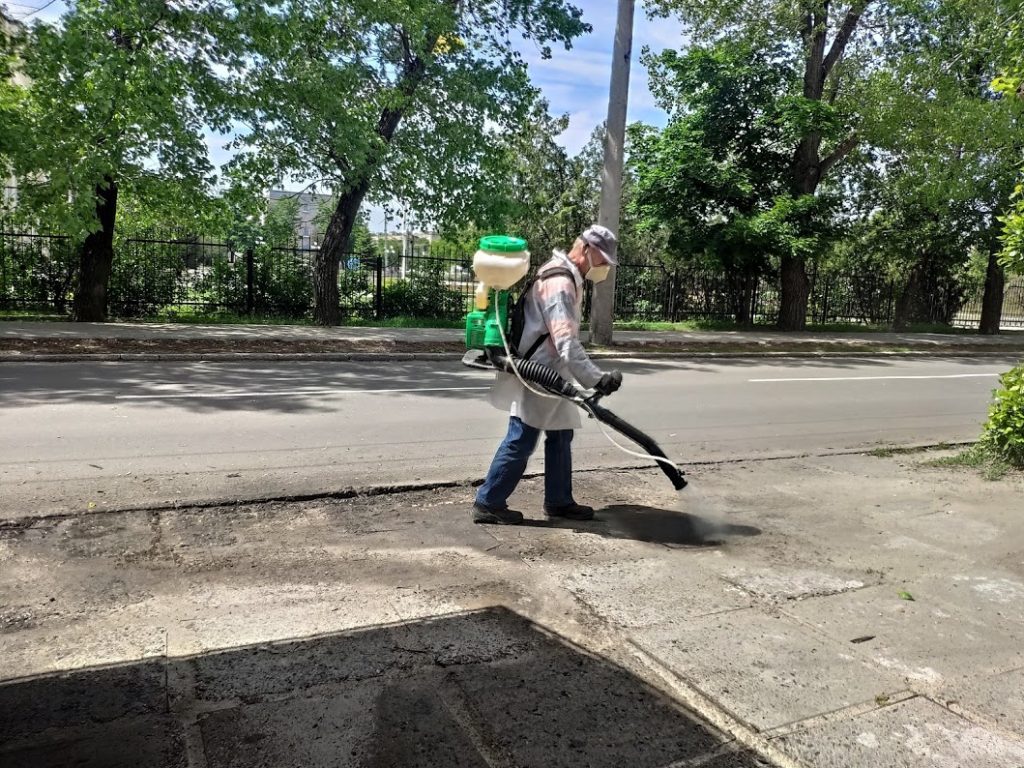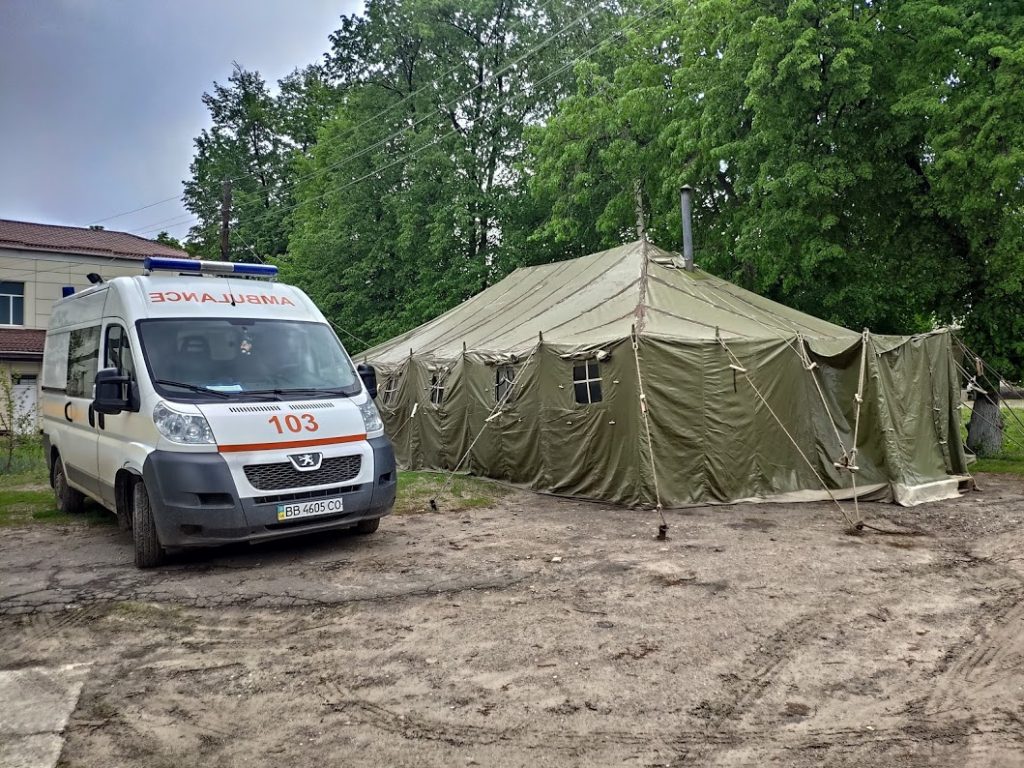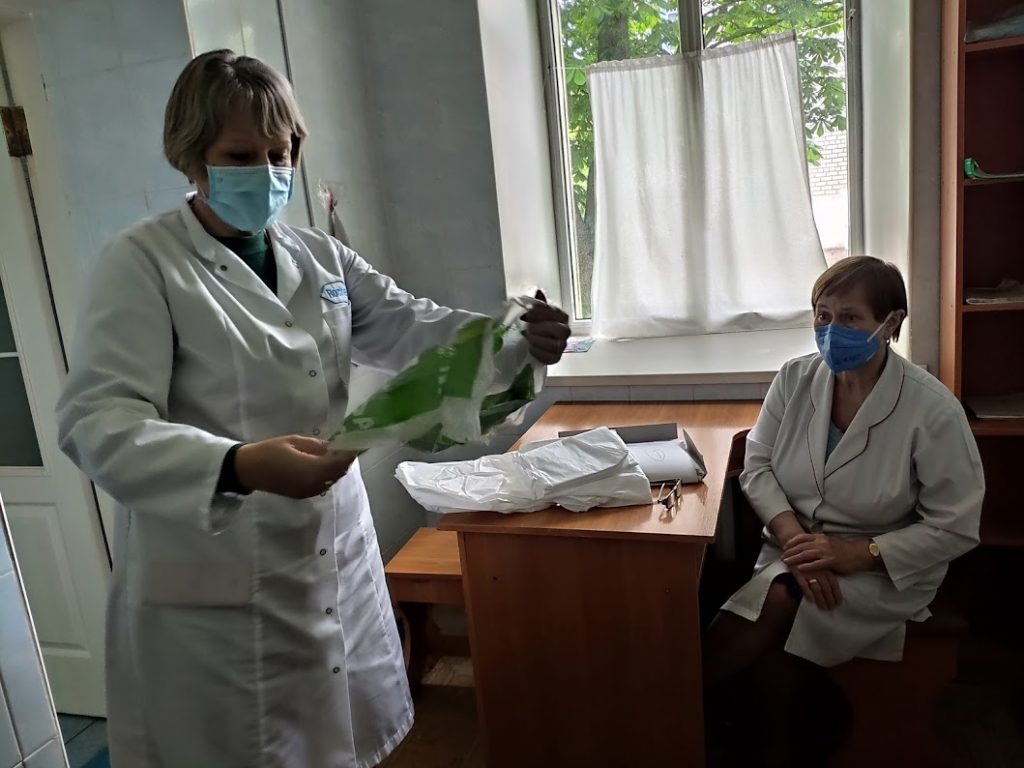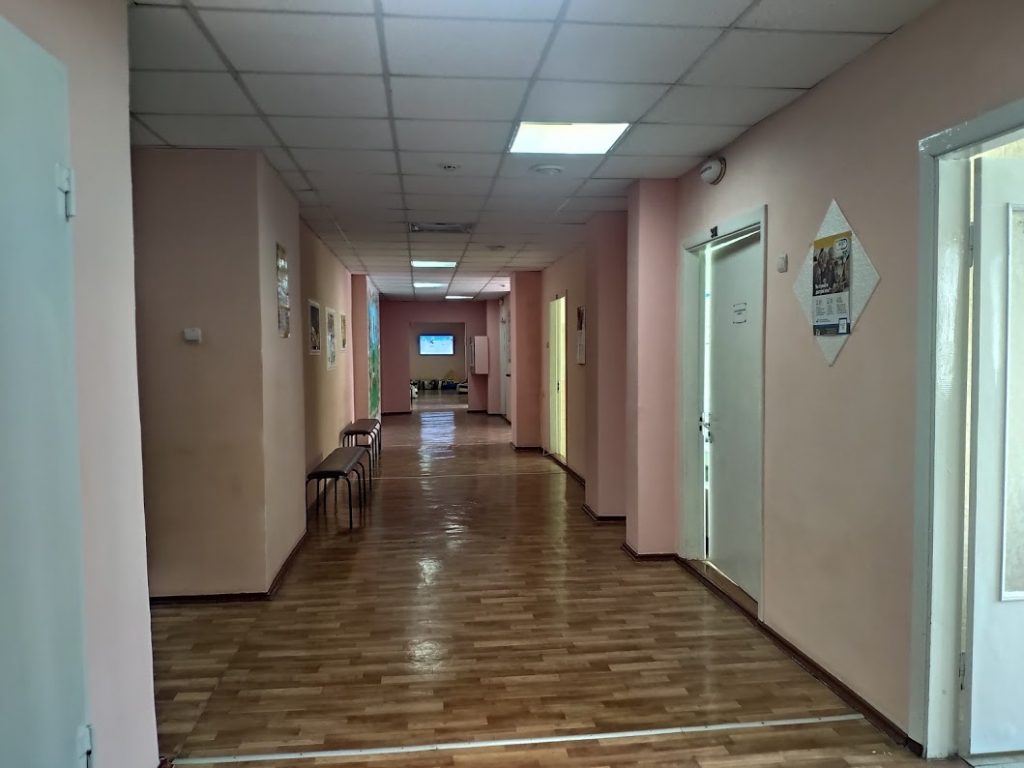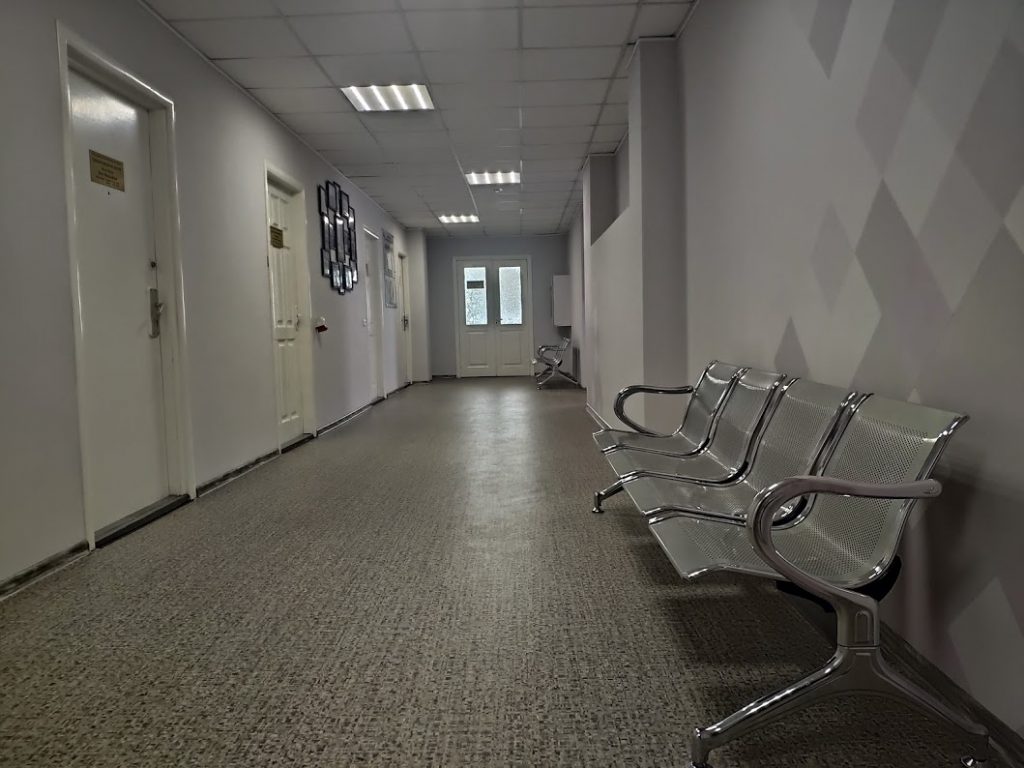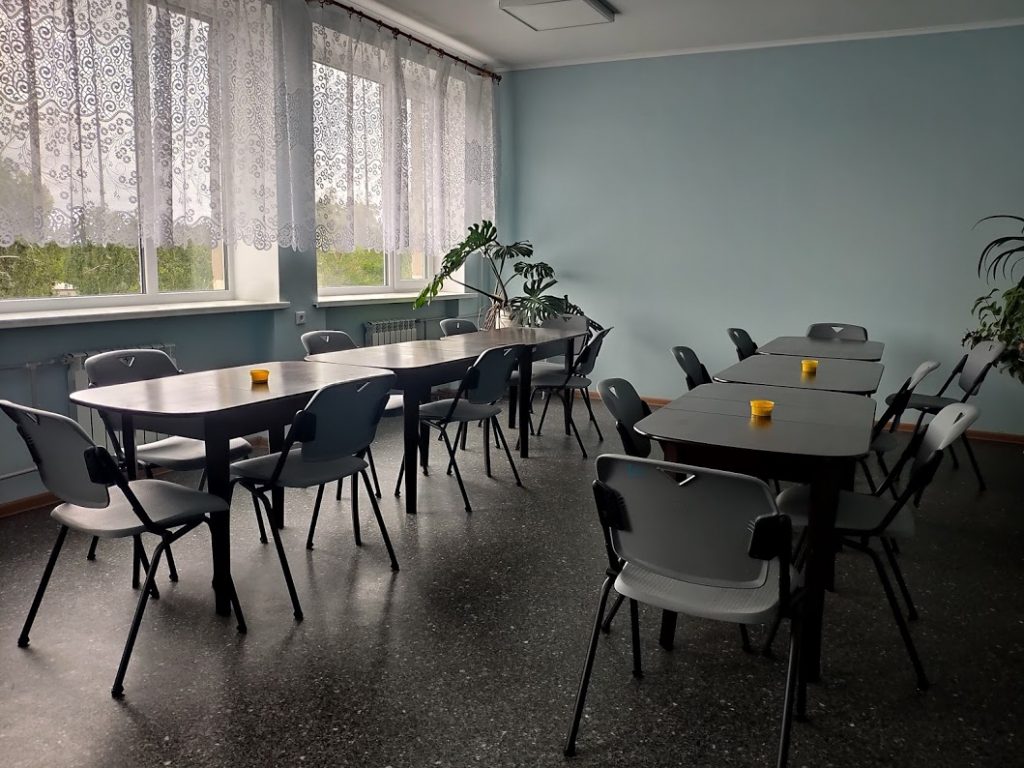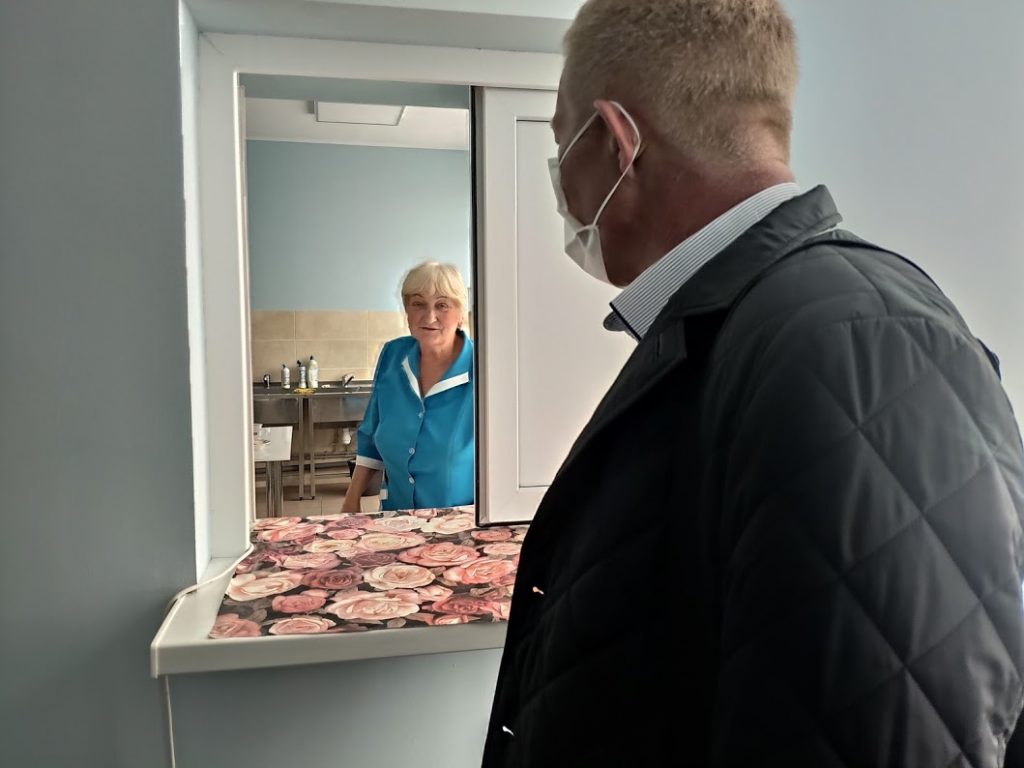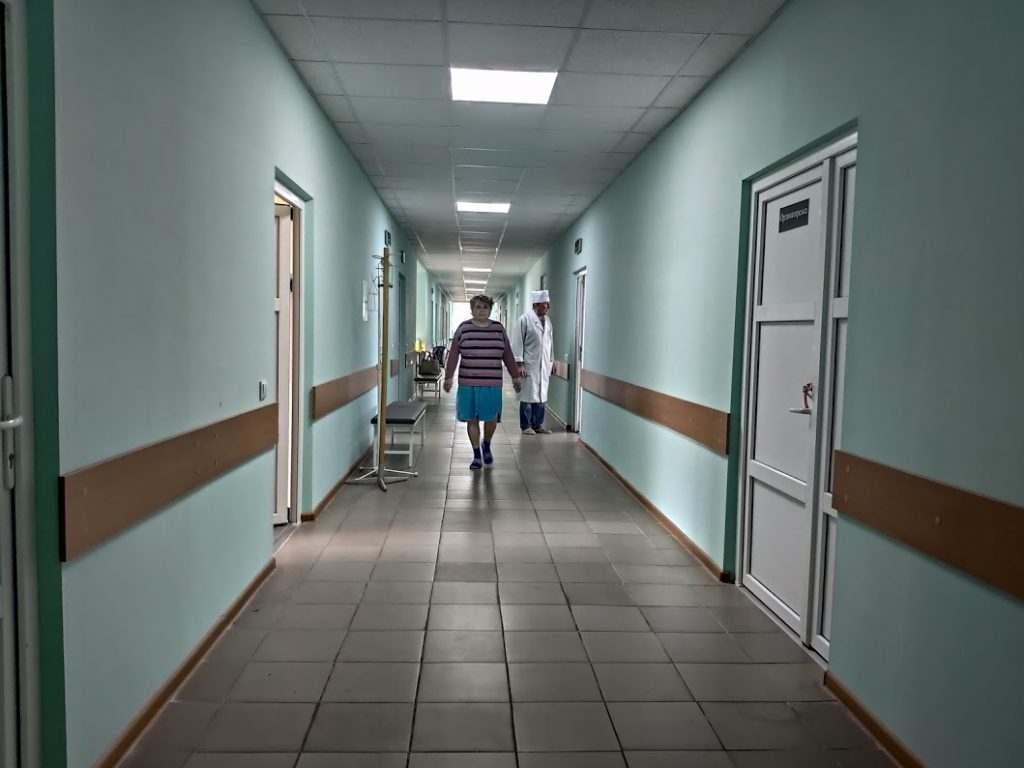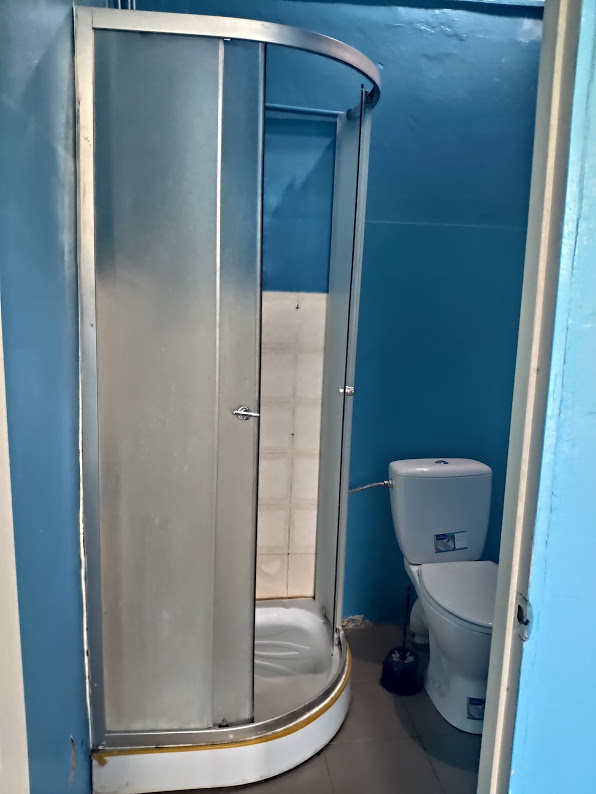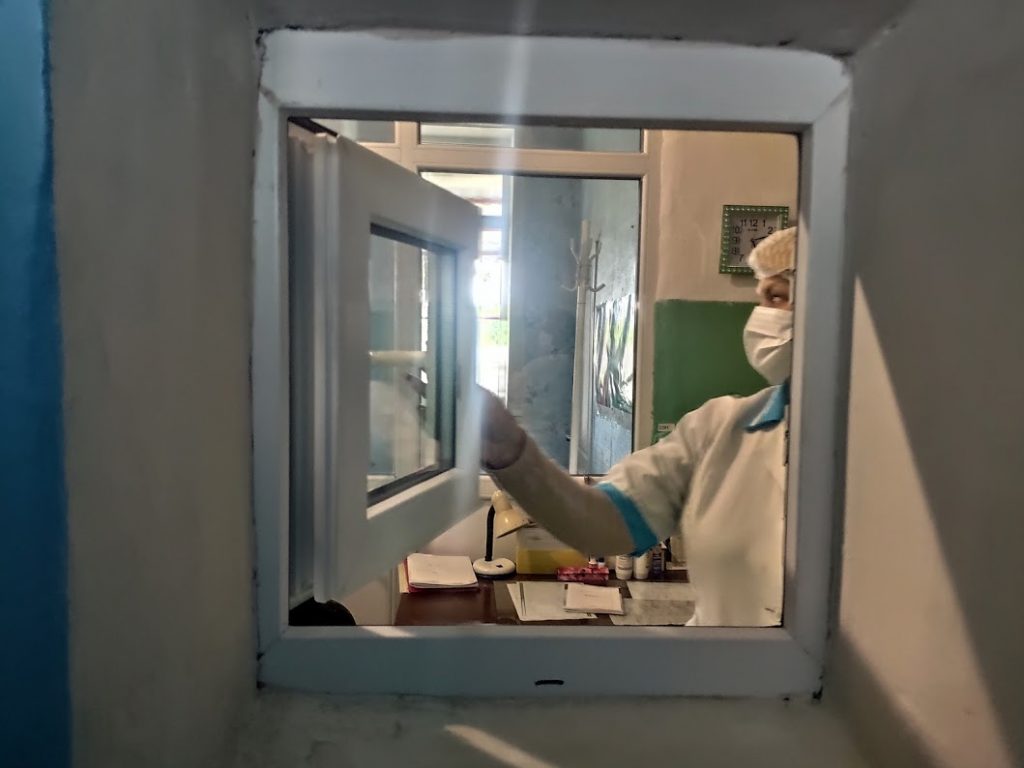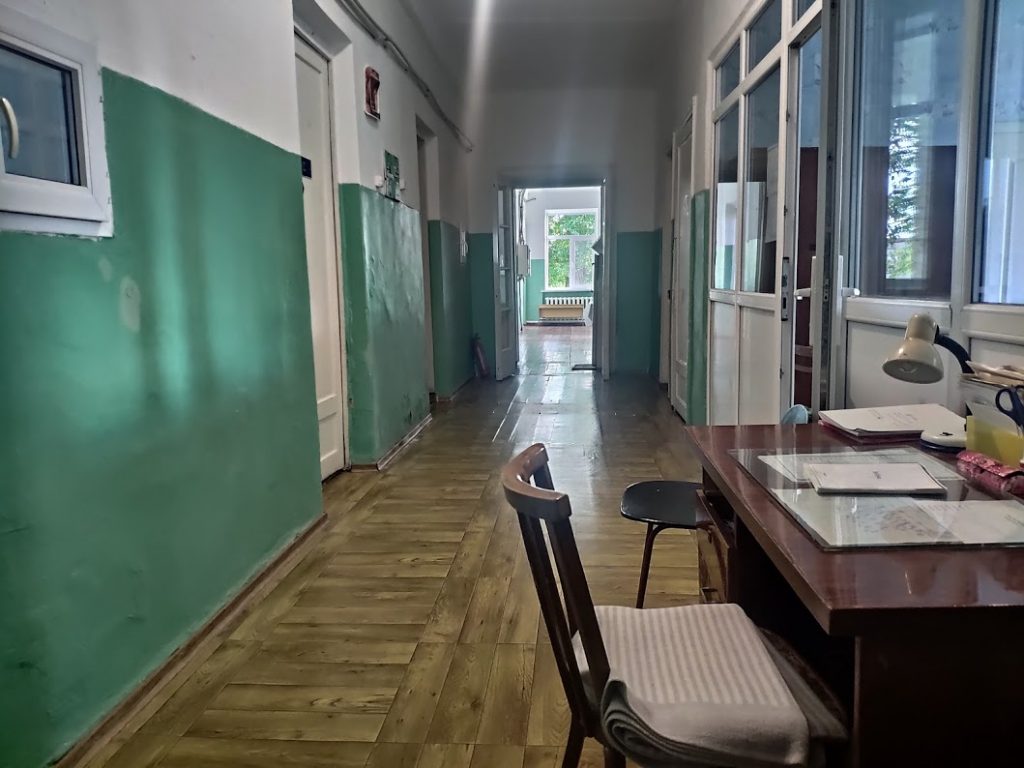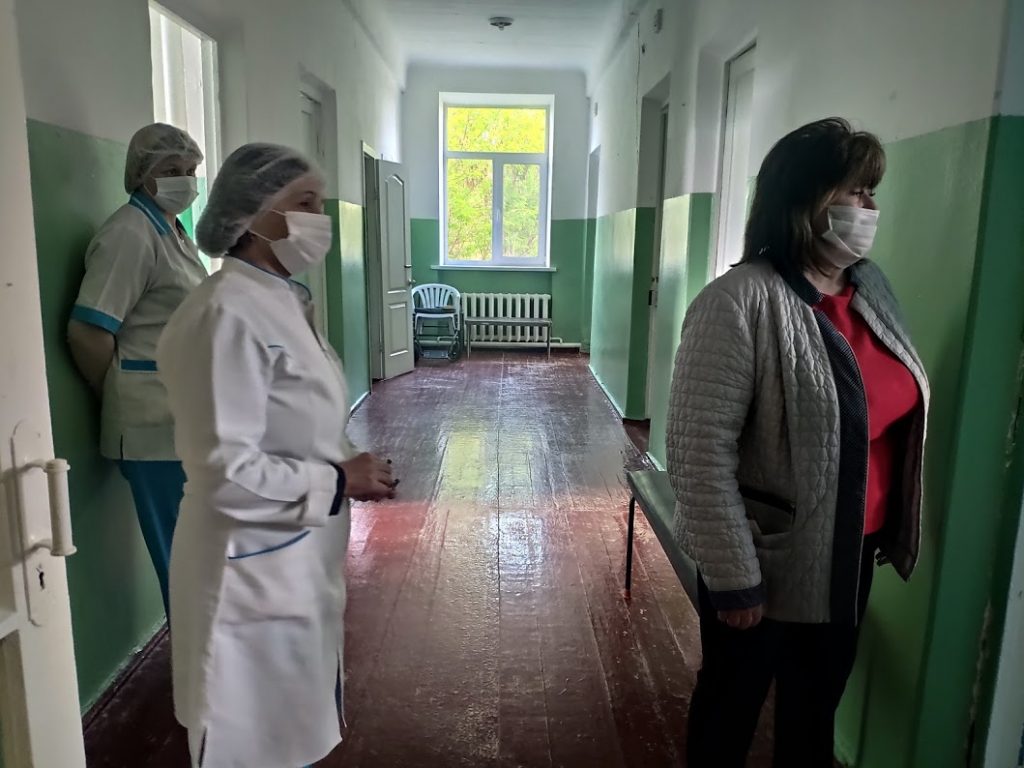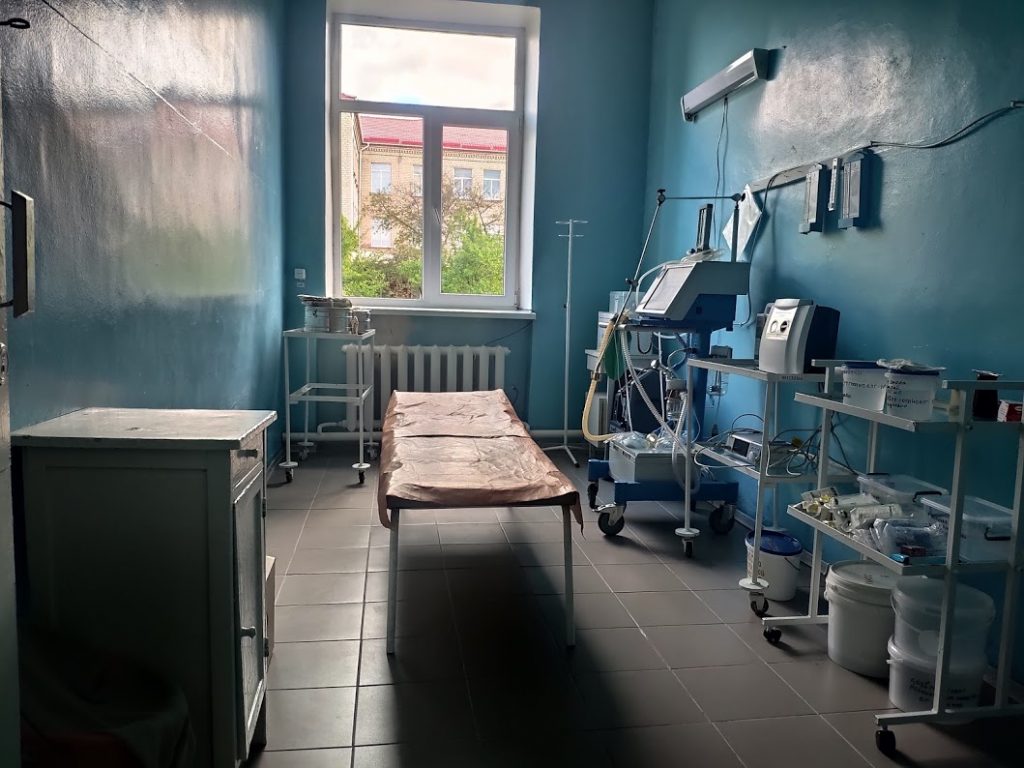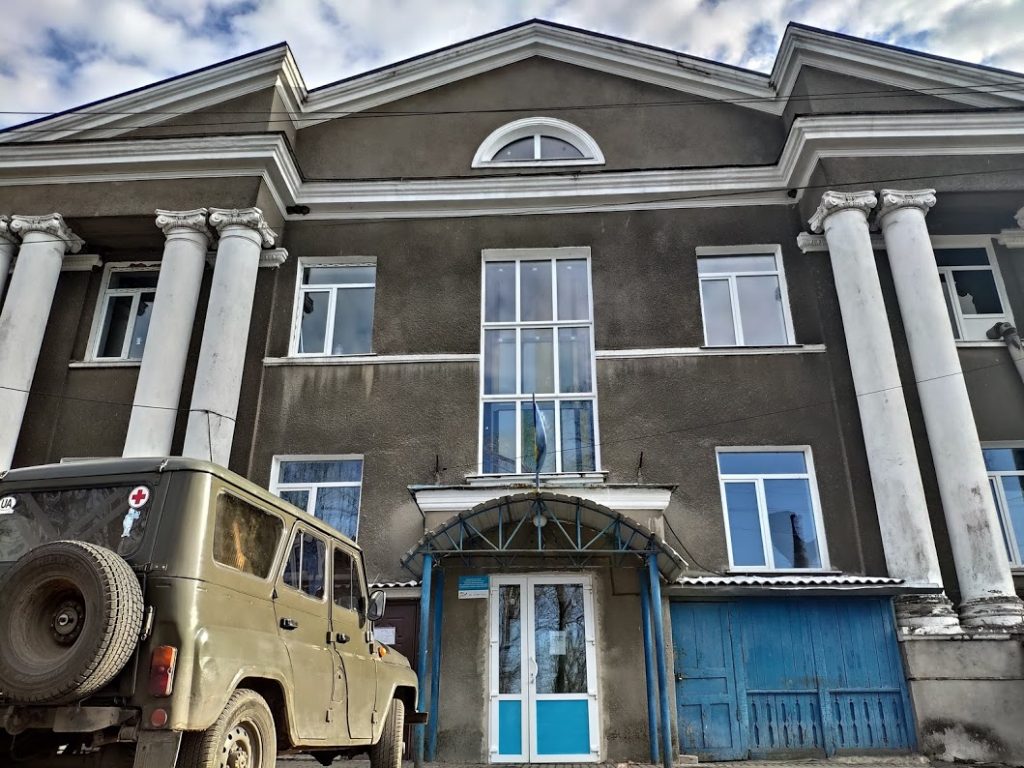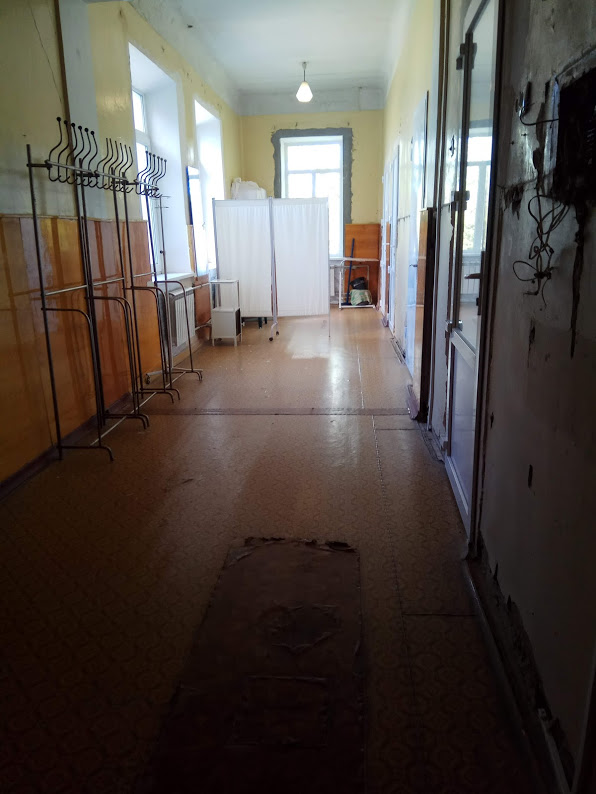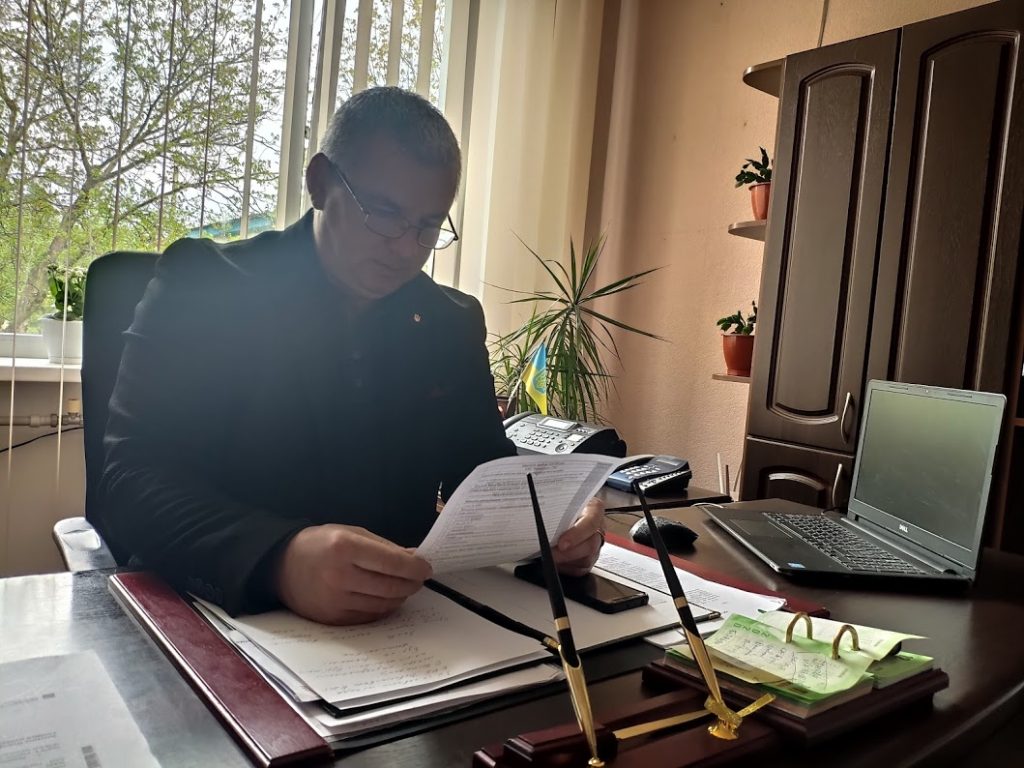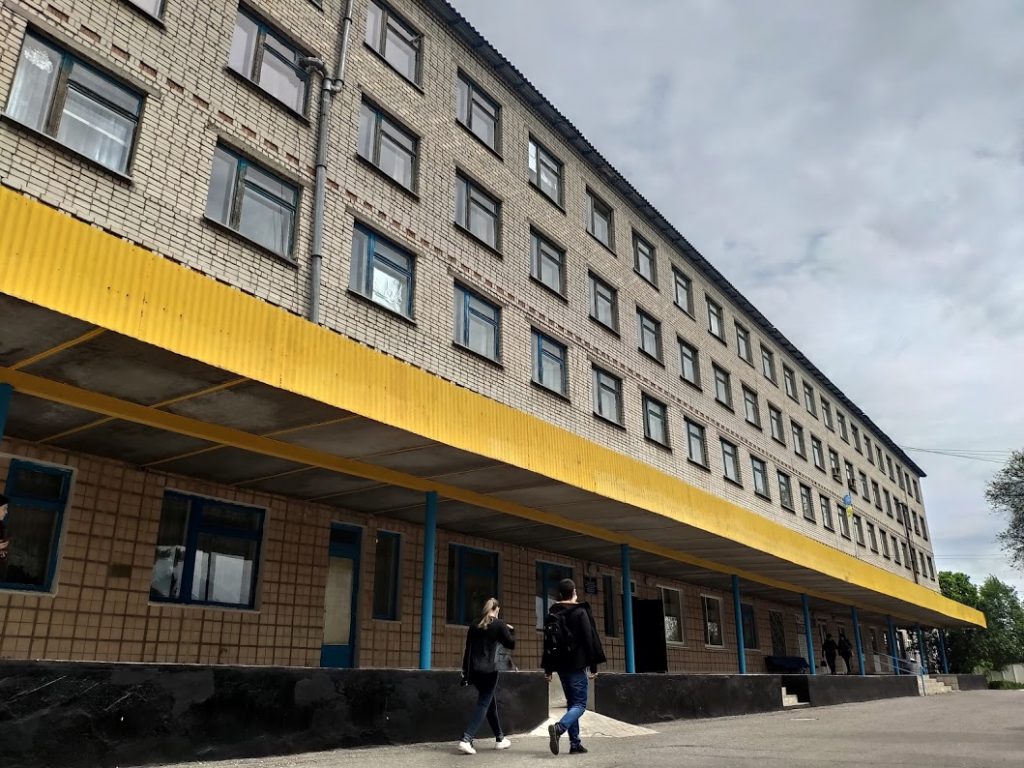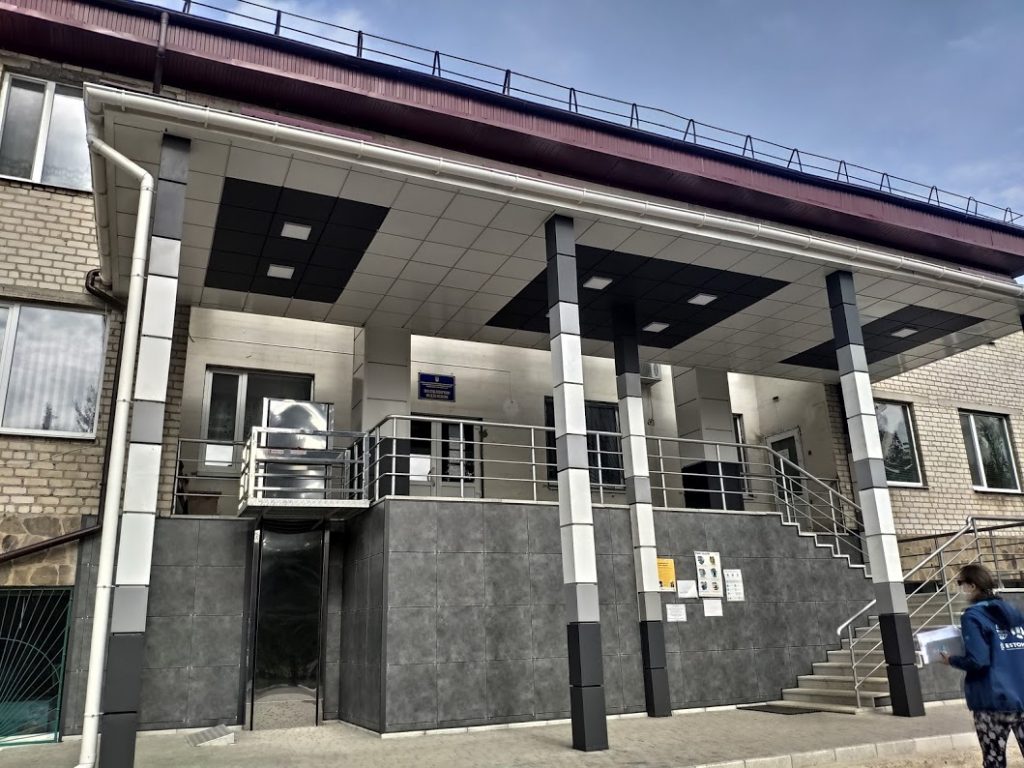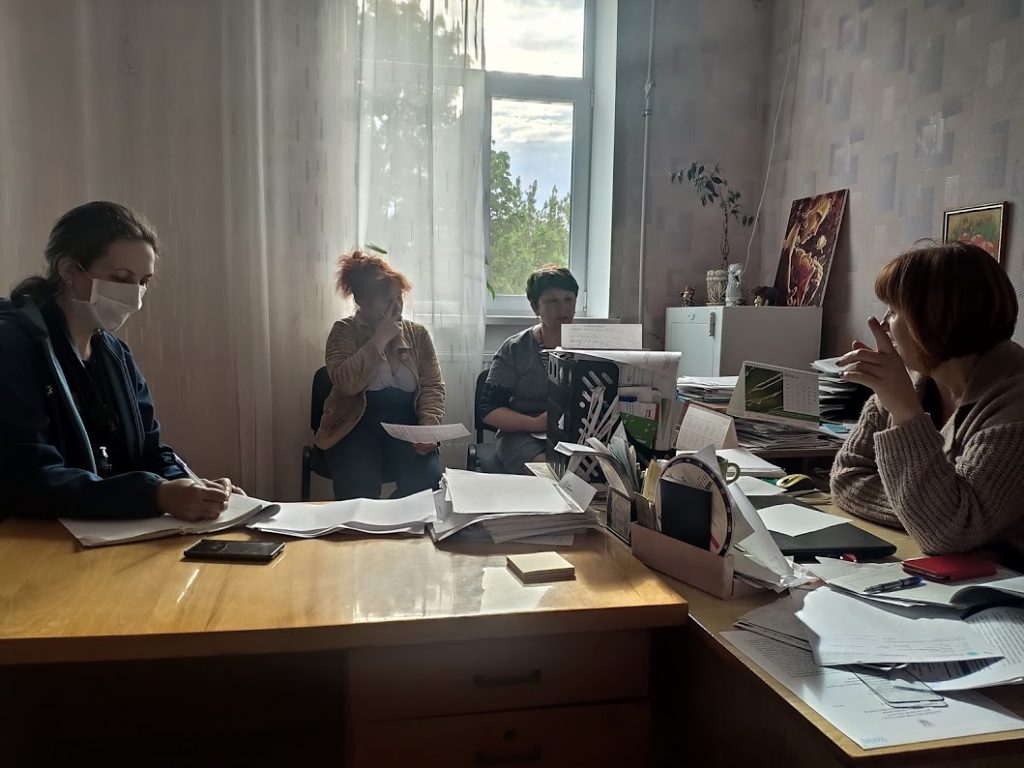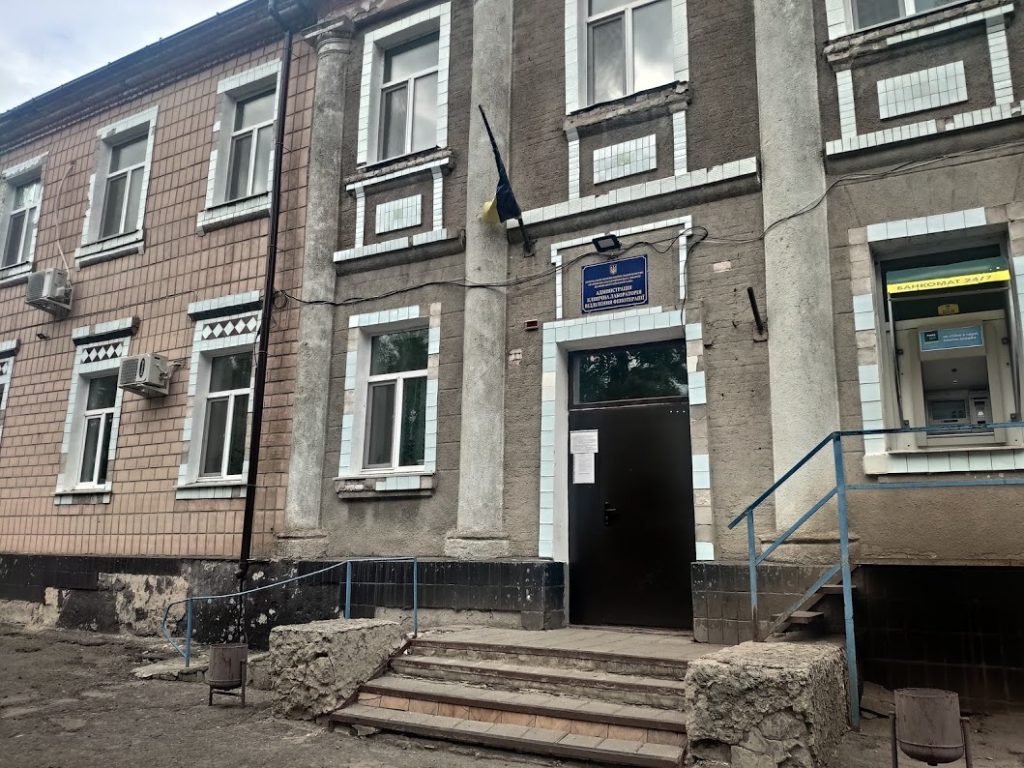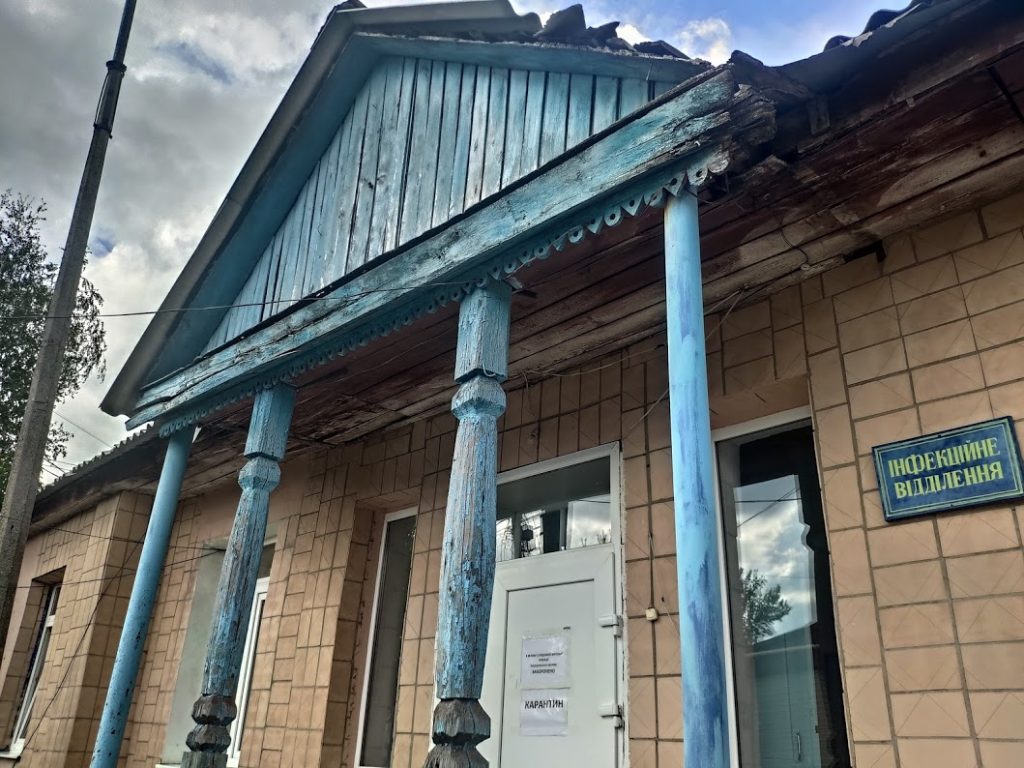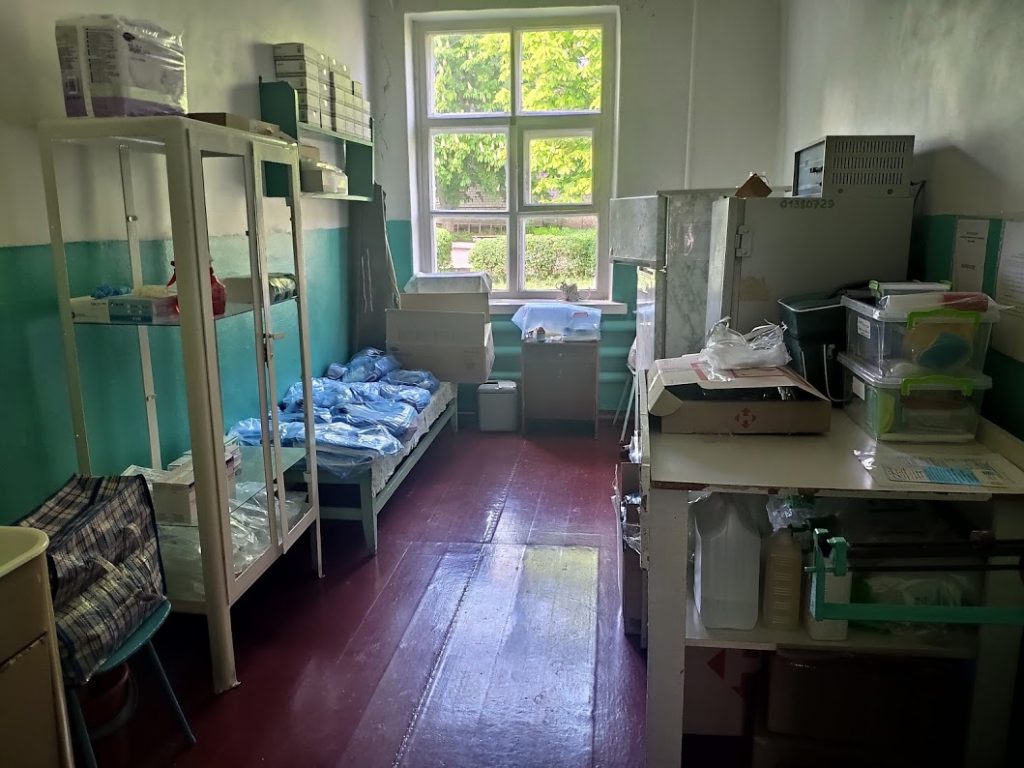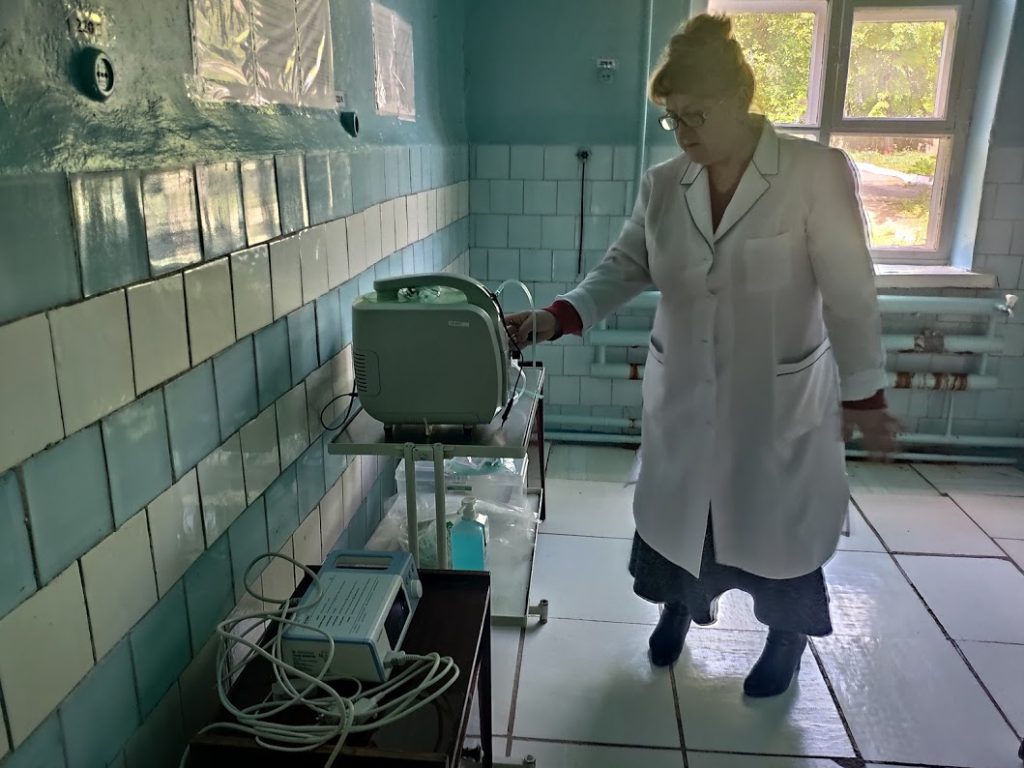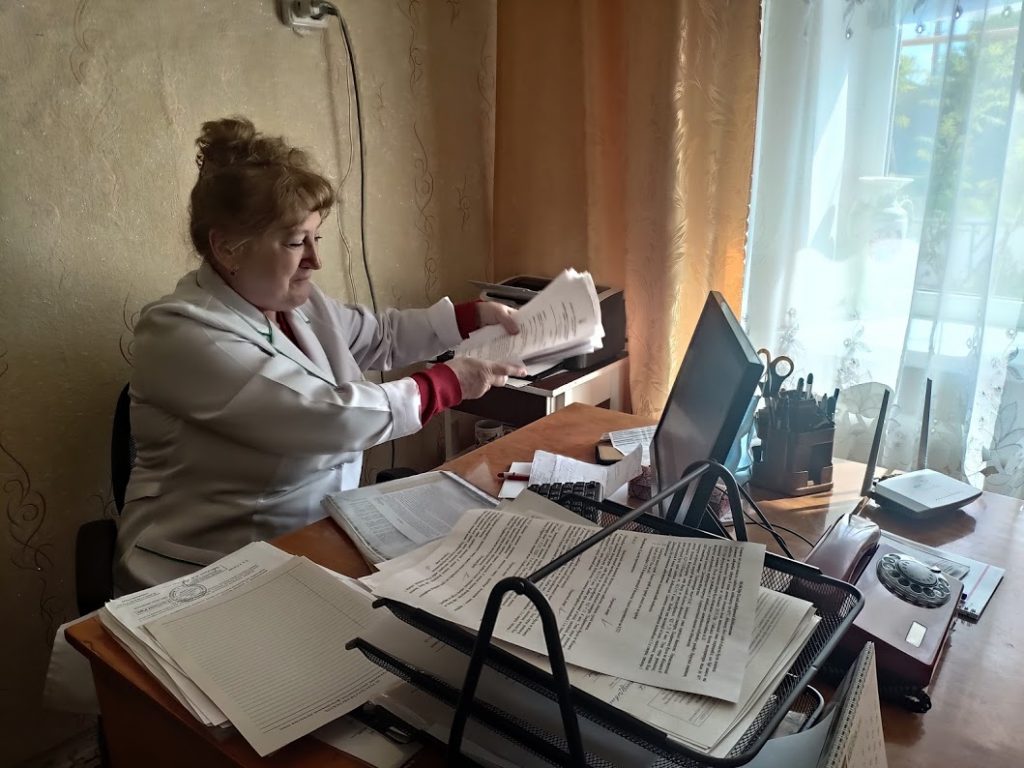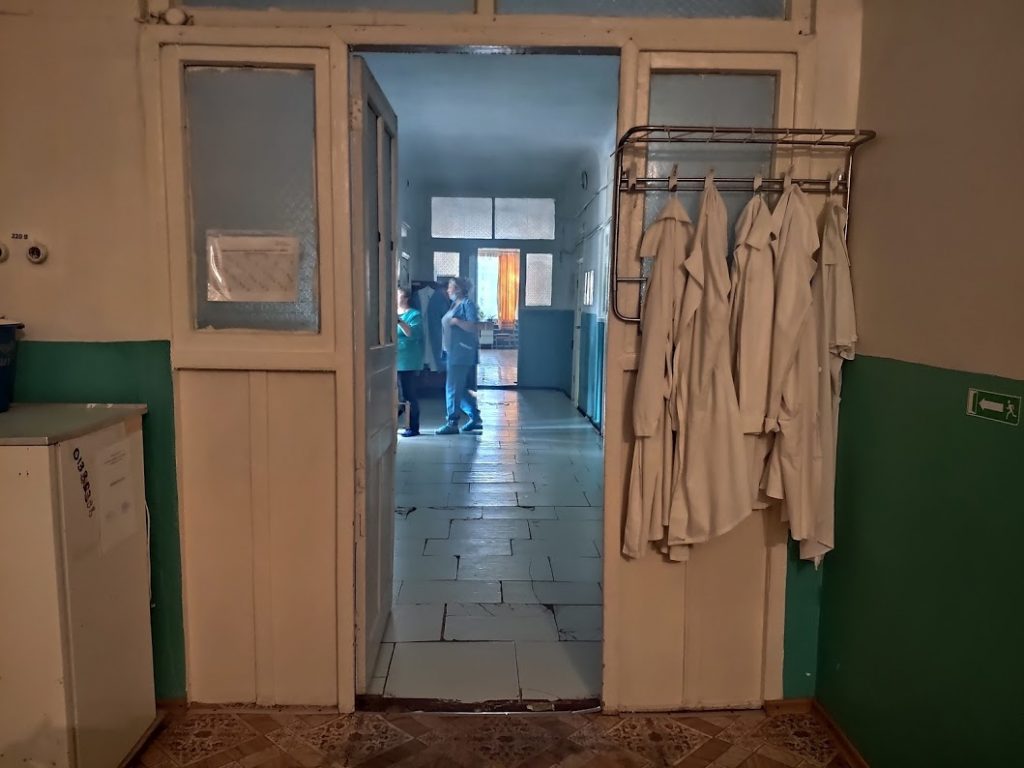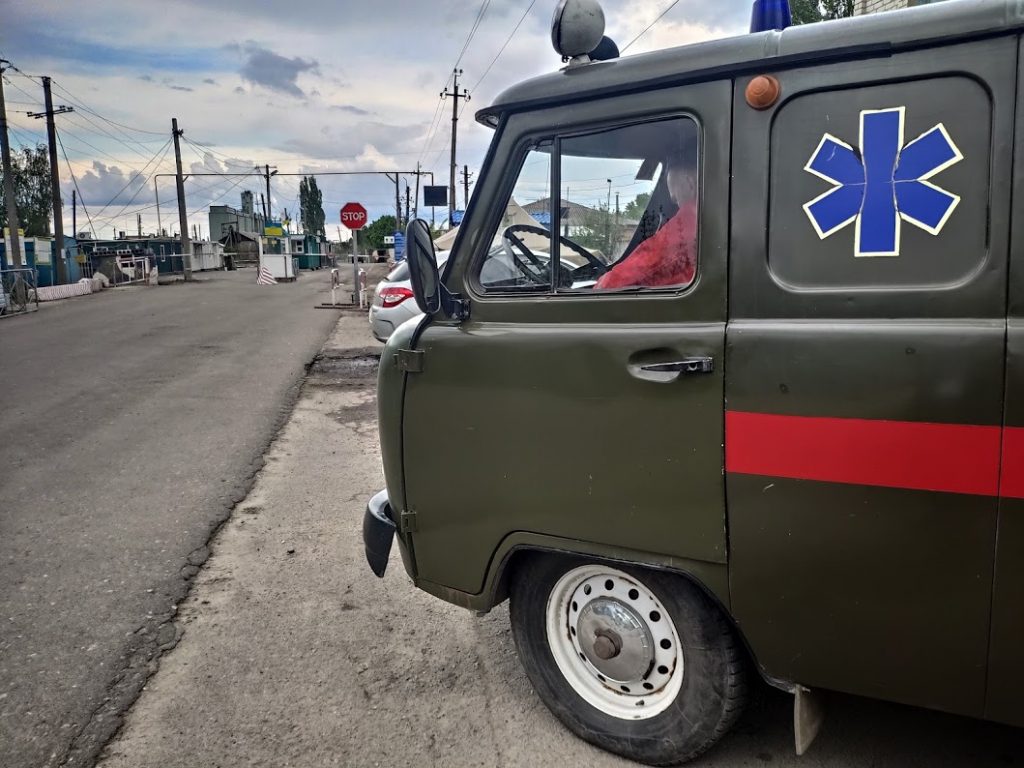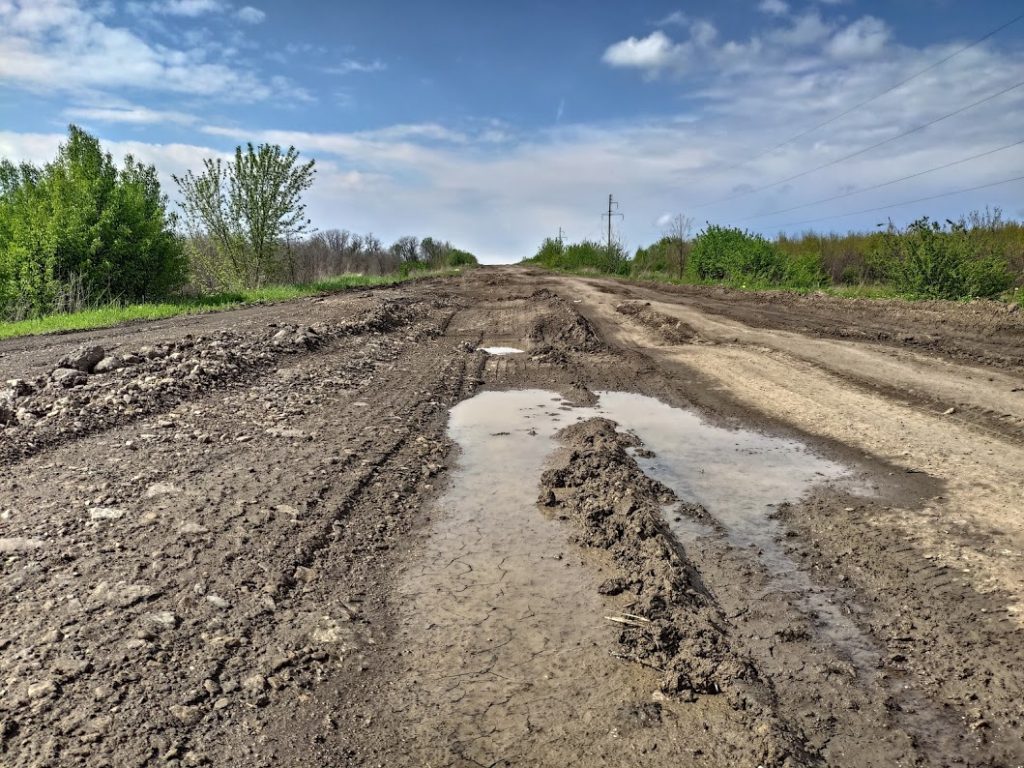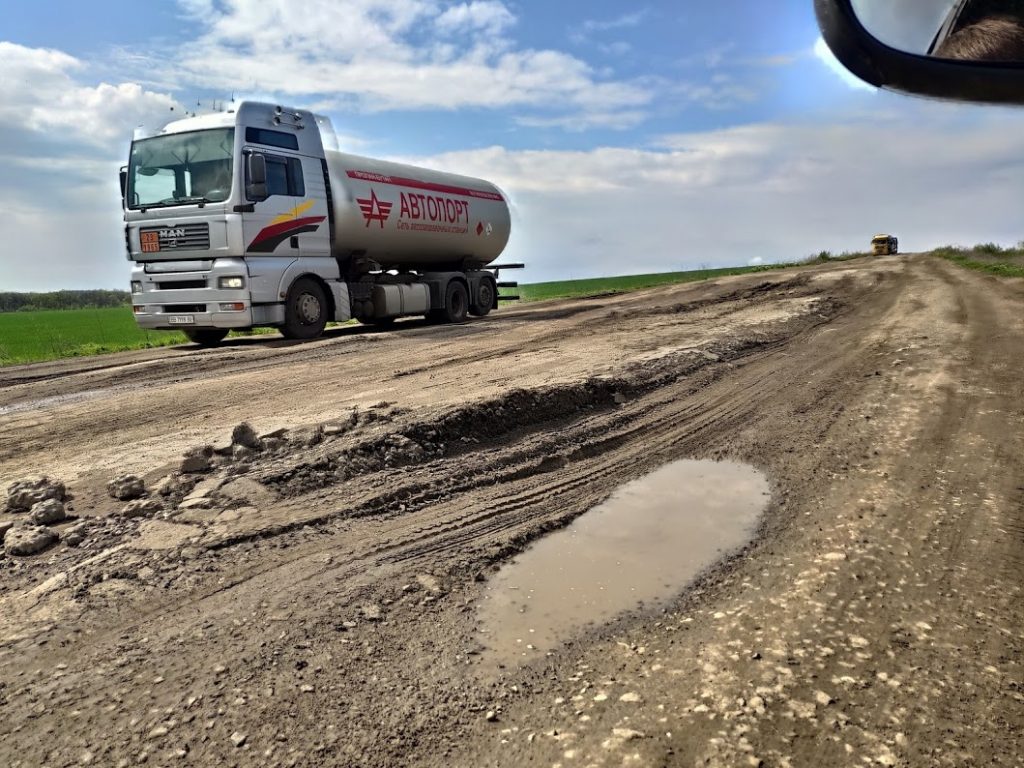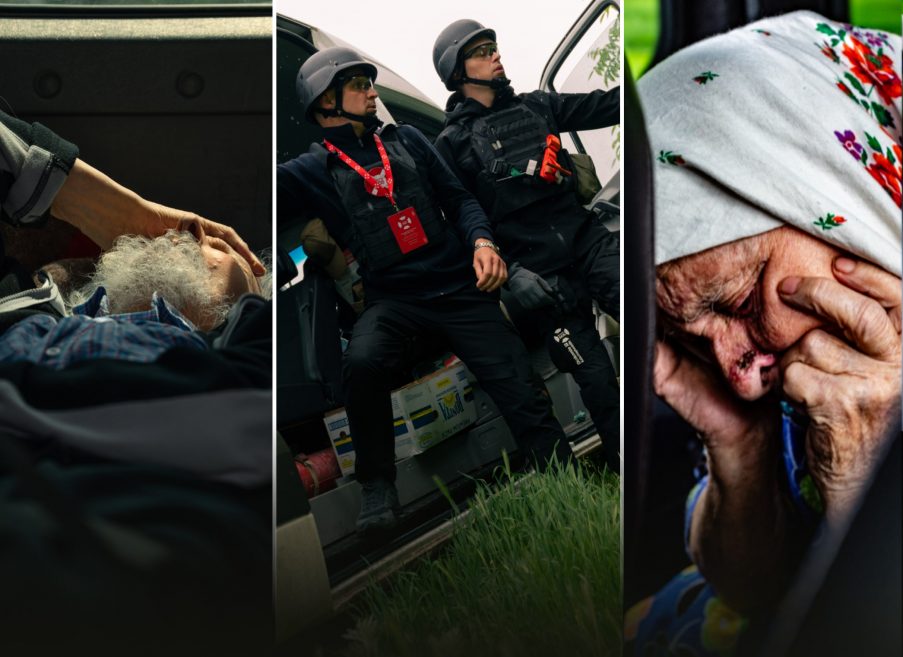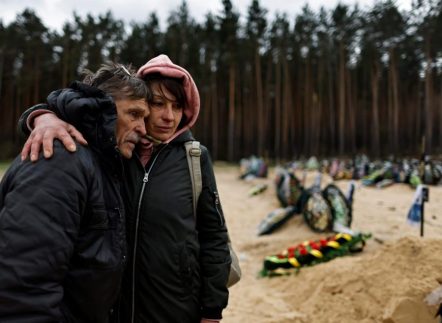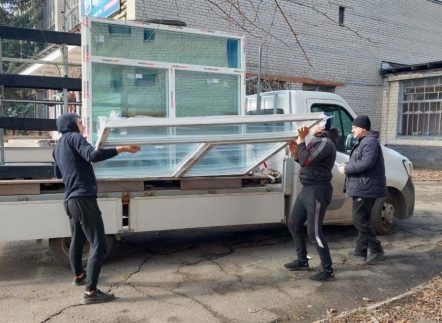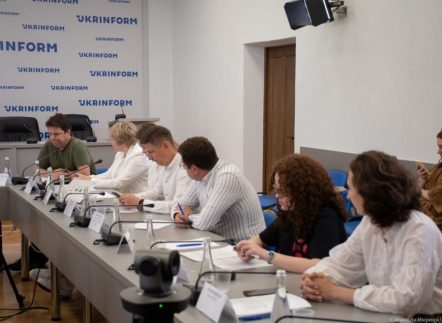
Download the full PDF report
View the full report online
CONTENT:
Introduction
1. Main findings
2. Designated hospitals
2.1. KNP “Rubizhne Central City Hospital”
2.2. KNP “Severodonetsk City Multidisciplinary Hospital”
2.3. Lysychansk Multidisciplinary Hospital
2.4. KNP “Starobilsk District Territorial Medical Association”
2.5. Bilovodsk Multidisciplinary Hospital
3. Hospitals of the second and third line
3.1. KNP “Stanichno-Luhansk Regional Territorial Medical Association and its department “Petropavlivsk Hospital of the Stanichno-Luhansk Regional Territorial Medical Association”
3.2. Popasnyanska Central District Hospital
3.3. Kreminska Multidisciplinary Hospital
3.4. Novopskovskyi Territorial Medical Association
3.5. Markivska Multidisciplinary Hospital
3.6. Milovska Central District Hospital
4. Main problems and recommendations
4.1. Low quality of rapid tests
4.2. A small number of laboratories for PCR testing and complex logistics for the transportation of biological material
4.3. Effective symptomatic treatment is expensive for most patients
4.4. Uncertainty of supplies of protection and disinfection means to medical facilities
4.5. Insufficient supply of personal protective equipment to small healthcare facilities
5. Conclusion
6. Appendix 1: Current needs of healthcare facilities in the Luhansk region
Introduction
From May 2 -16, 2020, the monitoring group of Charitable Foundation Voskok-SOS visited 12 medical facilities in the Luhansk region with the purpose of studying the current state of the hospitals and their needs during the time of the COVID-19 pandemic.
During the field mission, the monitoring team conducted approximately 30 interviews with the administration staff of medical facilities, medical workers, patients, public administration and local self-government officials. The group consisted of 8 people. Data was collected by observation, questionnaires, structured and semi-structured interviews. The methodology and monitoring tools were developed with the support of the Kharkiv Institute for Social Research and Youcontrol.virus project.
1.Main findings
Based on the collected data, the participants of the monitoring mission noted significant improvements in the material-technical provision/logistics of designated hospitals compared to the previous observations conducted at the end of March 2020. At that time, the research team assessed the state of the medical facilities they visited as critical. (Report: “CRITICAL BUT STABLE: The state of preparedness of medical facilities in Luhansk region for the COVID-19 epidemic”).
During the period from late March until mid-May 2020, additional necessary equipment for the work with COVID-19-patients was provided to most of the designated hospitals, including express-tests, means for transport of biological material for PCR-testing, personal protective equipment and disinfection.
Generally speaking, the designated hospitals and the majority of the hospitals of the second and third line have some supplies of protective equipment that will be sufficient for a period of several days to several weeks, even in the case of a rapid deterioration in the morbidity rate dynamics. Existing needs were partly covered by state and local budgets, as well as with the help of civil society and charitable organizations.
The role of commercial enterprises in providing hospitals of the first and second lines with the necessary equipment, means of individual protection, and consumables deserves a special mention. According to both the administrative staff of medical facilities as well as the public administration and local self-government officials, local businesses responded to the threats posed by the pandemic and have made efforts to provide hospitals with everything needed.
The participants of the mission also noted significant improvement in the instruction and professional training of medical workers and employees in the service sector, who are involved in infection control measures. All respondents demonstrated that they were familiar with emergency procedures related to the COVID-19 pandemic. They also stated that relevant orders and regulations are regularly updated and communicated to employees of all involved services and institutions. In addition to this, the medical workers and employees in the service sector also take part in trainings, where they practice the necessary procedure in any potential case of identifying patients with COVID-19 symptoms.
The members of the monitoring group drew attention to the enhancement of quarantine measures: the percentage of people wearing protective masks in public places has increased (including medical workers, public officials and service workers), and in some settlements regular disinfection of public places is carried out. In particular, the disinfection of public places was observed by the monitoring group in Severodonetsk and Stanytsia Luhanska. The above-mentioned procedures prevented the rapid spread of the coronavirus infection in the Luhansk region and helped avoid high patient mortality as well as the spread of illness to the doctors and staff.
However, the monitoring group identified a number of problems that, if left unaddressed, can have a very negative impact on the morbidity rate and increase the number of victims of a possible second wave of the COVID-19 epidemic. Some of these issues are described in Section 5 of this report.
2. Designated hospitals
2.1. Rubizhne Central City Hospital
The monitoring group did not have a chance to communicate effectively with the staff of Rubizhne Hospital. However, based on several brief conversations with the staff of this medical facility, as well as from information gathered from open and private sources, the monitoring mission concluded that the hospital is fully equipped to work with patients with COVID-19.
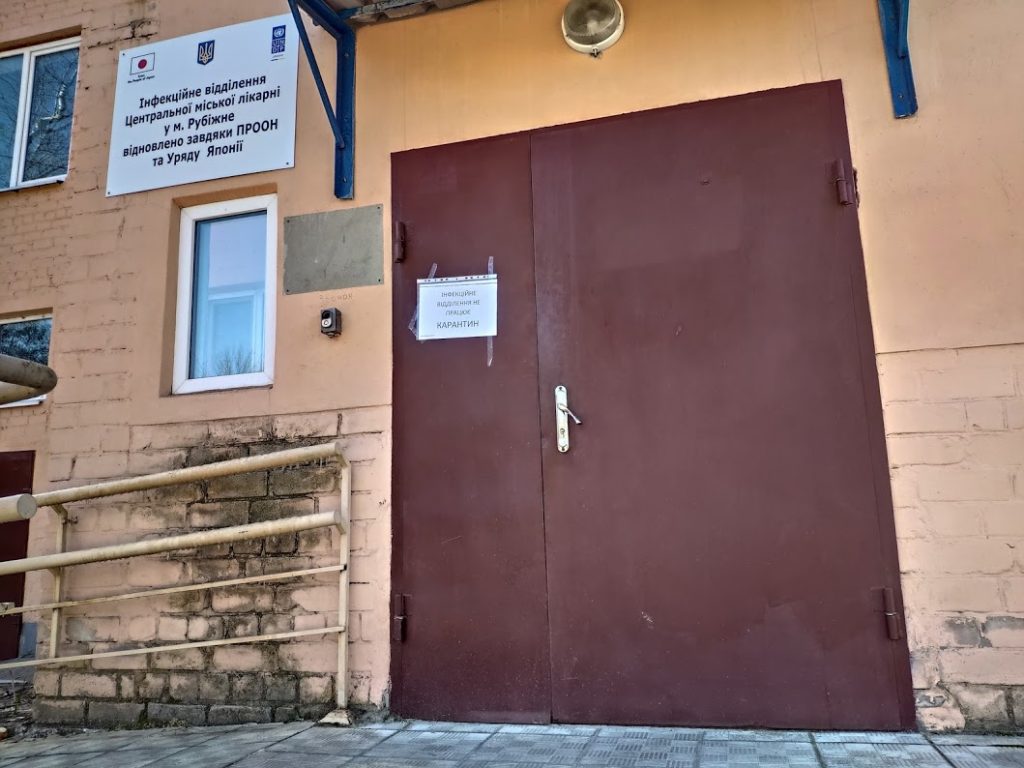
2.2. Severodonetsk City Multidisciplinary Hospital
The Severodonetsk Hospital has 60 beds prepared for patients with the coronavirus infection. There are two infectious diseases wards in the hospital: one for children and one for adults. Each of the wards has 10 isolation rooms. At the time of the monitoring, all patients with COVID-19 were discharged. During this same time, the hospital had a small stock of medical supplies for symptomatic treatment of patients with the coronavirus infection. The management also noted that it was difficult to procure certain drugs from the treatment protocol for patients with COVID-19, adopted by the Ministry of Healthcare of Ukraine.
The medical facility currently has 20 lung ventilators. The management stated that there is a need for six more ventilators. The hospital has four infectious disease specialists and 12 anesthesiologists. Approximately 30% of the medical personnel and 60 years and older, which is a good indicator compared to the average age of medical staff in other hospitals in the region.
2.3. Lysychansk Multidisciplinary Hospital
Lysychansk Hospital has already had four patients with COVID-19. In all of the cases the disease was of moderate severity and all patients were transferred from intensive care to the infectious diseases ward. The infectious diseases ward has a total of 35 beds and isolation rooms with 5 beds. In any possible case of a new wave of the disease, the hospital is able to increase the number of beds to 55 for patients with COVID-19.
The hospital management has developed action plans in case of mass admission of patients, the deployment of additional beds and the involvement of additional doctors. The hospital staff went through various trainings related to the pandemic, considering individual cases and the correct procedure in dealing with any potential cases.
The hospital has 10 ventilators, (one of which is portable), five lung ventilators are outdated and need to be replaced. The hospital has four infectious disease specialists and 10 anesthesiologists. In general, the facility is provided with medical supplies for patients with COVID-19. At the time of monitoring, the hospital management noted that there were sufficient test tubes with the transport substance to collect materials for PCR testing. However, this number is not enough for mass testing, which is envisaged by Ukrainian legislation from May 19, 2020.
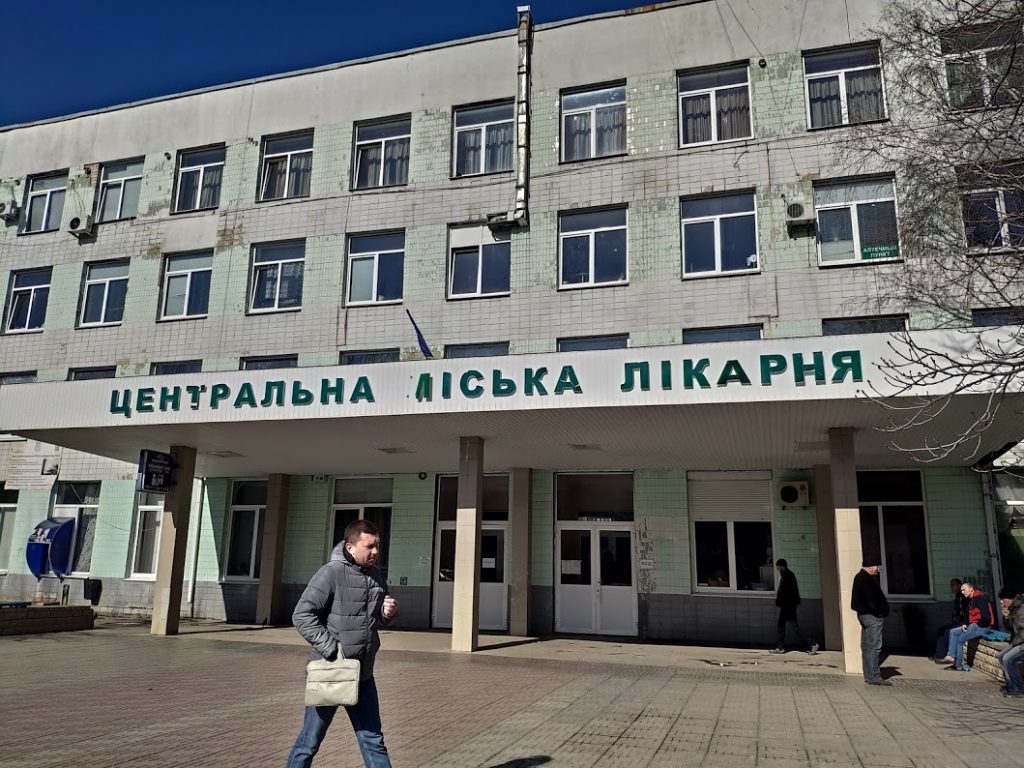
2.4. Starobilsk District Territorial Medical Association
The Starobilsk District Hospital has an infectious disease ward equipped with 30 beds and 7 isolation rooms. The hospital management has also indicated its preparedness to expand with an additional 70 beds. The hospital has already had several patients with COVID-19 admitted, two of them were in intensive care. Their condition was successfully stabilized. At the time of the monitoring, the hospital had sufficient supplies of drugs prescribed by the treatment protocol for COVID-19 patients, as well as individual protection means and disinfectants.
In total, the hospital has 11 ventilators, six of which are installed in the intensive care unit. The hospital has two infectious disease doctors and three anesthesiologists.
2.5. Bilovodsk Multidisciplinary Hospital
Bilovodsk hospital has so far admitted one patient with the COVID-19 infection. The facility has an infectious disease ward, designed for 10 beds. The ward has two isolation rooms. If necessary, the hospital can increase the number of beds for patients with COVID-19 by an additional 20. In total, the facility has nine ventilators. The hospital also has three intensive care units. At the time of the monitoring visit, the hospital had a sufficient stock of pharmaceuticals envisaged by the treatment protocol for COVID-19 patients. Basic needs of individual protection means and disinfectant were also met.
3. Hospitals of second and third line
3.1. “Stanichno-Luhansk Regional Territorial Medical Association” and its department “Petropavlivsk Hospital of the Stanichno-Luhansk Regional Territorial Medical Association”
In the hospital, specifically in the Petropavlivsk department, there is an infectious disease ward with 20 beds, seven of which are in isolation rooms. The staff includes one infectious disease specialist (aged 78), who is in the risk group. Specially trained nurses assist the specialist if necessary. The burden on this hospital from the COVID-19 outbreak is rather heavy, since observation sites have been organized on the premises of both locations (15 in Stanichno-Luhanske and 20 in Petropavlivsk). The two observation sites are overlooked by the same specialist. The department has a total of 6 ventilators, two of which are placed within the isolation rooms of the infectious disease ward for severe cases of COVID-19.
Although the hospital is not a designated location for the reception of COVID-19 patients, one patient infected with the coronavirus was treated there for nearly a month. This person was returning to the non-government controlled territory from Poland. Due to the quarantine, he was let through the line of contact by the de-facto governments on the temporarily occupied territories of Ukraine. The person was under observation in the Petropavlivsk hospital, where he was first diagnosed with bronchitis, and then with the coronavirus infection. Since it was a mild case, it was decided not to transfer the patient to a designated hospital. The treatment was provided by the local infectious disease specialist, who coordinated the actions and received phone consultations from the regional infectious disease specialist.
3.2. Popasnyanska Central District Hospital
The hospital of Popasna does not have an infectious disease ward, and the management is not preparing to receive patients with COVID-19. However, 20 observation beds have been established in the hospital. In total, the hospital has six beds and six ventilators in its intensive care unit. The staff includes two infectious disease specialists and one anesthesiologist. The shortage of staff is one of the main problems for this healthcare facility. It is also important to note, that by estimations of the management, 60 to 70% of the hospital staff are older than 60 years. At the moment of the monitoring visit, drugs prescribed by the protocol for treatment of patients with a coronavirus infection were available. However, the management of the hospital stated the need for personal protective equipment and disinfectants. At the time of this report, no cases of COVID-19 were detected in the district of Popasna and in this hospital more specifically.
3.3. Kreminna Multidisciplinary Hospital”
Kreminna hospital does not have an infectious disease ward. If necessary, patients are treated in Rubizhne. Moreover, the facility is not planning on receiving patients with COVID-19 if the designated hospitals are full. However, the hospital’s management is preparing for a worst-case scenario and in case of an epidemiological deterioration of the situation in the region, plans on reconfiguring all departments of the hospital to treat patients with the coronavirus infection.
At the time of the monitoring mission , there are no patients with a confirmed diagnosis of COVID-19 at this hospital. However, in the district of Kreminna, in the village Varvarivka an outbreak of the disease was detected: six patients were diagnosed with a coronavirus infection. The village was closed off for several days by the police. The hospital’s medical staff took all necessary measures, thus a spread of the disease was prevented.
The healthcare facility has eight ventilators, and the staff includes six anesthesiologists, who can service these devices and provide assistance to the seriously ill patients. Despite the absence of an infectious disease ward, the staff includes an infectious disease doctor. However, close to 48% of the staff is in the risk group due to their age (60+). At the moment of the monitoring visit, the hospital was provided with medication for symptomatic treatment of COVID-19.
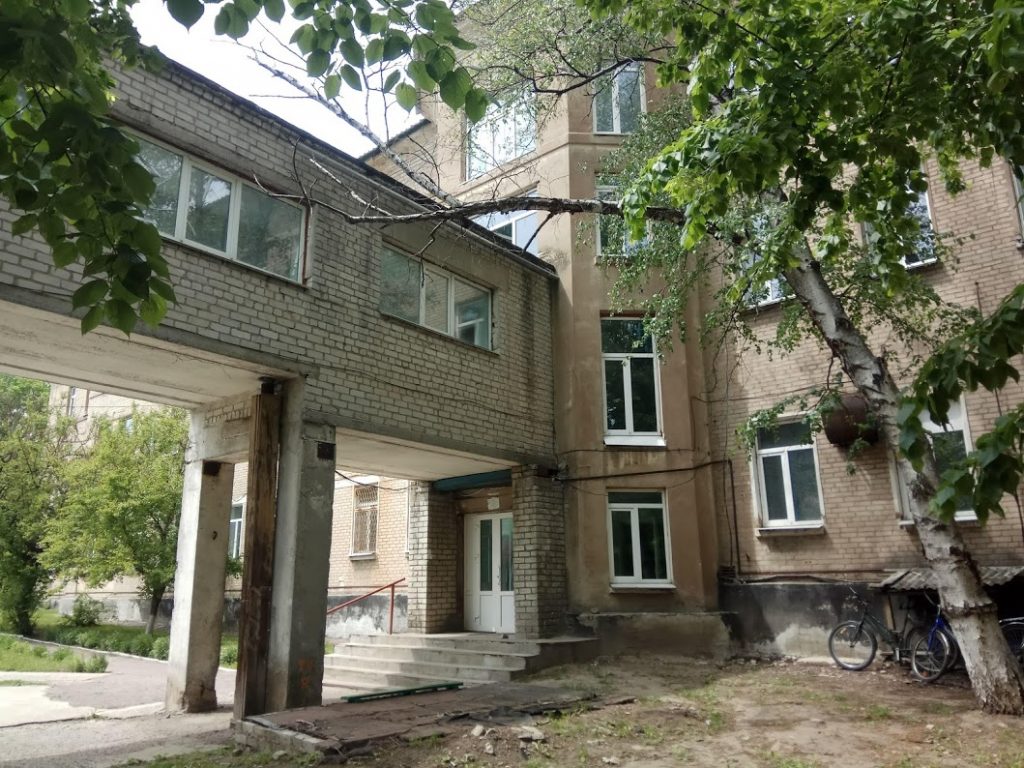
3.4. “Novopskovskyi Territorial Medical Association”
At the time of the mission, nine patients with COVID-19 have been confirmed in the Novopskovskyi district. Four of these patients were treated in the hospital of Starobilsk and five with a mild condition recovered at home. Although the Novopskovskyi hospital is not a designated location for the reception of patients with COVID-19, it admitted two patients with the coronavirus infection before their diagnosis was confirmed by the laboratory. The medical staff that worked with patients suspected with COVID-19 complied with all safety procedures and measures.
A special unit has been appointed for the treatment of COVID-19 patients in the Novopskovskyi hospital, as is the case in other healthcare facilities in the Luhansk region. The staff of this unit has separate vehicles and protective suits. They examine patients at home, perform express tests, collect and transport materials for PCR tests to the laboratory in Severodonetsk. After each deployment of the special unit, the vehicle is disinfected.
Due to the need to travel to Severodonetsk several times a week, the hospital needs fuel for the vehicle (about 50 liters of fuel for one trip to the laboratory). The critically poor state of the roads from Novopskov to Severodonetsk, which wears up the vehicle, should be stressed as well.
At the moment, the hospital has only one ventilator that is suitable for the medical care of patients with COVID-19. The staff of the hospital includes two anesthesiologists, who can service this equipment as needed. The infectious disease ward of the hospital has nine rooms with 15 beds and is suited for the treatment of patients with a coronavirus infection. In general, the hospital’s management is ready to receive patients with COVID-19, on the condition of additional financing and the provision of equipment to the hospital.
3.5. Markivka Multidisciplinary Hospital
The hospital in Markivka has an infectious disease ward with ten beds, with separate rooms and half-separate rooms, and can increase the number of beds for COVID-19 patients up to 17 upon need. At the time of the monitoring group’s visit, the hospital had an available supply of drugs prescribed by the protocol for the treatment of several patients. At the time of this report, there has not been a confirmed case of COVID-19 in this hospital or in this district.
As was the case in Novopskovskyi hospital, currently there is only one ventilator that is suitable for the care of patients with COVID-19 t. The management of the hospital foresees the need for an additional three lung ventilators. There is one anesthesiologist among the medical staff to service this ventilator, however, if patients with a severe form of coronavirus infection are admitted, more anesthetists will be needed to assist such patients. The main concern here is that other wards of the hospital will temporarily be left without this specialist. In general, the problem of a staff shortage in Markivka hospital and of hospitals in other small settlements in the Luhansk region, is the most pressing. In this healthcare facility, there is one stationary x-ray machine and two portable machines, but in the case of treatment of patients with COVID-19, one more portable x-ray machine will be needed.
3.6. Milovska Central District Hospital
In the Milovska hospital, there is an infectious disease ward with 20 beds. However, there are no separate rooms in the ward, which impedes the work with patients with COVID-19, if the hospital will admit such patients as well as patients suspected with the coronavirus infection. At the moment of the monitoring mission, the hospital had only a small stock of drugs prescribed by the treatment protocol for COVID-19. Although the hospital has had several patients suspected with the coronavirus infection, there has not been a confirmed diagnosis.
The hospital has two ventilators. One of them is a new device, but it was unsuitable for use at the moment of the monitoring visit, as the quarantine prevented the serviceman from Kiev to come and tune the ventilator. The hospital also has an old ventilator from the Soviet era which is operational. But the biggest problem is the absence of an anesthesiologist in the district hospital, who could carry out resuscitation procedures on severely ill patients. In case of urgent need, a medical specialist has to come over from Bilovodsk, which is located 47 kilometers from Milove. The road connecting the two towns is in a deplorable state. In general, the absence of certain medical specialists is one of the fundamental problems of this healthcare facility. Another problem with respect to the medical personnel is the age of the staff: close to 40% is in the risk group of the COVID-19 pandemic (60+).
4. Main problems and recommendations
4.1. Low quality of the express tests.
Medical staff of almost all the designated hospitals, with whom the members of the monitoring group had the opportunity to speak , indicated that all three types of express tests that are available, give unreliable results. Staff members of one of the designated hospitals, where several patients with COVID-19 were being treated at the moment of the visit, said that the dubious accuracy of the express tests made them check the quality of the test-systems by experiment. They placed biological material from patients who were confirmed with COVID-19 and who had an average severity of the disease. None of the three available types of express tests showed a positive result in any of the measurements. The conclusion about the inaccuracy of the COVID-19 diagnosis based on the available express tests is confirmed by medical staff members from other hospitals from the first and second line. This suggests that the express testing that is recommended by the Ministry of Healthcare does not give a reliable count of the actual infections, and therefore does not help to stop the spread of the coronavirus. Thus, the hundreds of millions of hryvnias that were spent from state and local budgets to buy the respective test-systems, could have been spent more effectively on PCR testing, additional laboratories for PCR testing, and on the improvement of the logistics of transporting the biological material to such laboratories.
Recommendation: Increase the efficiency in identifying coronavirus infections by increasing the rate of PCR testing. To facilitate the access of patients to PCR testing, redirect budget allocations that are spent on the purchase of express tests, on equipment and the maintenance of new laboratories for PCR testing.
4.2. A small number of laboratories for PCR testing and complex logistics for the transportation of biological material. Up to this day, only one laboratory in the whole of the Luhansk region performs analyses on the presence of the coronavirus in the human body. This laboratory, according to its director, processes an average 60 samples of biological material per day. Generally speaking, the maximum capacity of the laboratory is 90 analyses per day. This capacity is limited by a shortage of necessary equipment and a shortage of qualified employees (the medical unit of the laboratory currently consists of two people). In case of a rapid growth of COVID-19 cases, the laboratory will not be able to effectively control the spread of the coronavirus. Moreover, the requirements on mass testing set by legislative amendments will most likely not be met with the current capacity. Apart from the heavy burden on the laboratory staff, another major concern is the distance of travel to Severodonetsk from healthcare facilities in faraway districts of the region. The route from the hospitals in the Troitske, Markivka, Milove, and Stanichno-Luhansk districts, to the laboratory located in the administrative center of the region, is 250 to 300 kilometers both directions. With the absence of (proper) roads and with worn-out vehicles, it puts an additional financial burden on the healthcare facilities. Moreover, medical staff and specifically members of the special unit designated for COVID-19 cases, are made unavailable for emergency care to patients for long periods of time, as the travel from such distant districts can take up to 6 hours in both directions. In the light of the acute shortages of personnel, this is not a rational use of human resources.
Recommendation: Increase the number of laboratories for PCR testing, organizing them in a cluster system in such a way that the distance between laboratories and distant healthcare facilities does not exceed 50 kilometers. For a more rational use of human as well as technical and materials resources, organize the transportation of samples of biological material by the laboratories themselves or by specialized contractors.
4.3. Effective symptomatic treatment is expensive for most patients.
The designated hospitals are equipped with medication for the symptomatic treatment of the coronavirus infections, as foreseen by the treatment protocol confirmed by the Ministry of Healthcare. However, according to many staff members of the designated hospitals that have already successfully treated COVID-19 patients, the confirmed protocol does not include drugs that are more effective in preventing dangerous complications of the disease. Despite the limitations imposed by the protocol, doctors in the patients’ interests often prescribe drugs for the treatment of a coronavirus infection that are not foreseen by the treatment protocol. The cost of such treatment can be from 1500 to 5000 hryvnia per day, and these expenses are fully borne by the patients or their loved ones. During a visit to one of the designated hospitals, members of the monitoring group witnessed the refusal to treat one of the patients due to a lack of funds to pay for the recommended drugs.

Recommendation: Revise the protocol for symptomatic treatment of COVID-19, taking into account Ukrainian and global experience of providing medical care for patients with the coronavirus. Add effective drugs to the protocol, which in fact have already been used by Ukrainian doctors for the symptomatic treatment of COVID-19 patients. Revise the list of drugs permitted for purchase by healthcare facilities and add to that list those drugs that have in practice shown their effectiveness in symptomatic treatment of patients with a coronavirus infection. Seek to provide the designated hospitals with additional drugs at the cost of the government or turn to international organizations for assistance.
4.4. Uncertainty of supplies of protection and disinfection means to medical facilities.
Most doctors and management staff of healthcare facilities cannot forecast the timing and volumes of supplies of necessary personal protective equipment and disinfectants. This uncertainty forces lower-level medical workers to save, for example by reusing single-use disposable masks, respirators, and protective gowns and suits. The monitoring group has repeatedly heard about the practice of autoclaving or cleaning the said protection materials with chemical solutions in order to reuse them. Moreover, staff of the healthcare facilities use unsuitable materials, for example garbage bags, as additional protection for the sake of saving protective equipment. These practices do not improve the epidemiologic situation and should be halted.
Recommendation: The management of healthcare facilities and their medical staff should be informed about plans to provide them with protective equipment and disinfectants. Hospitals should have a supply of protective equipment and disinfectants for the case of a rapid growth of the number of COVID-19 patients. The control on the utilization of these materials should be increased.
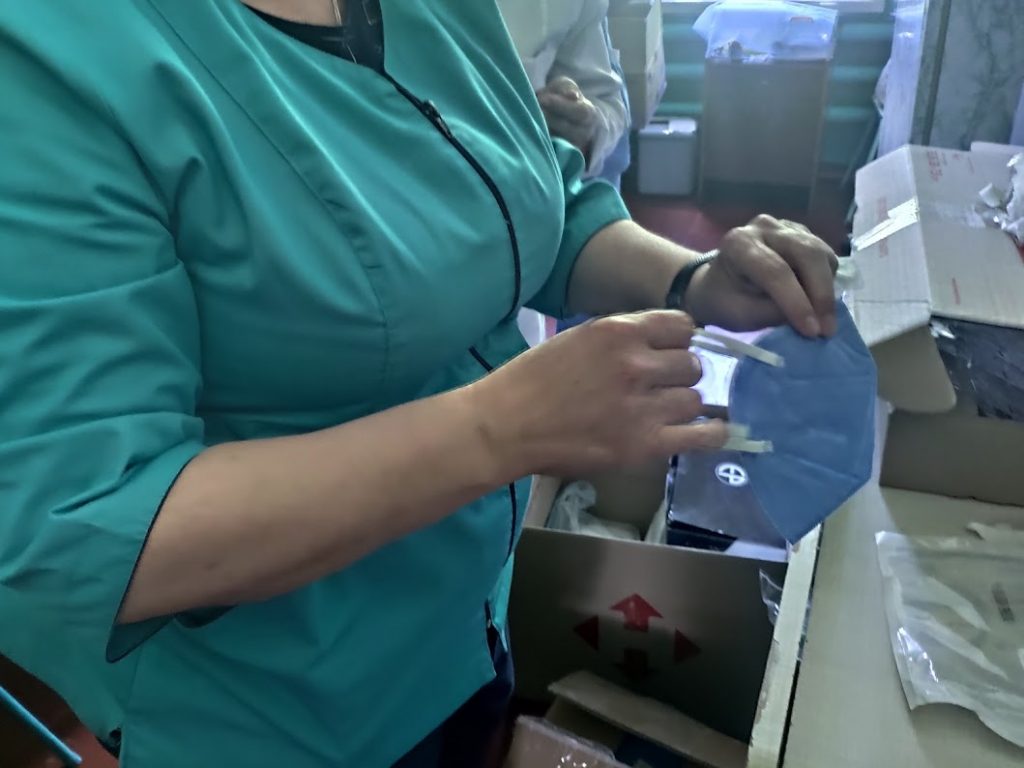
4.5. Insufficient supply of personal protective equipment to small healthcare facilities
(outpatient clinics). At the moment, all resources of the central government, the hromadas (local communities and self-governance units) and the commercial sector, which were allocated for the fight with the COVID-19 epidemic, have been directed to hospitals in the first and second line. At the same time, staff of the small healthcare facilities in remote settlements often do not have sufficient stock of protective equipment and disinfectants, although they have the first contact with patients and thus do not run less risk, than personnel in the designated hospitals.
Recommendation: Given the high probability of infection of doctors at the initial contact with COVID-19 patients, the practice of financing of small healthcare facilities on a residual principle should be revised. All medical workers that make first contact with patients should be provided with the necessary supply of protective equipment and disinfectants.
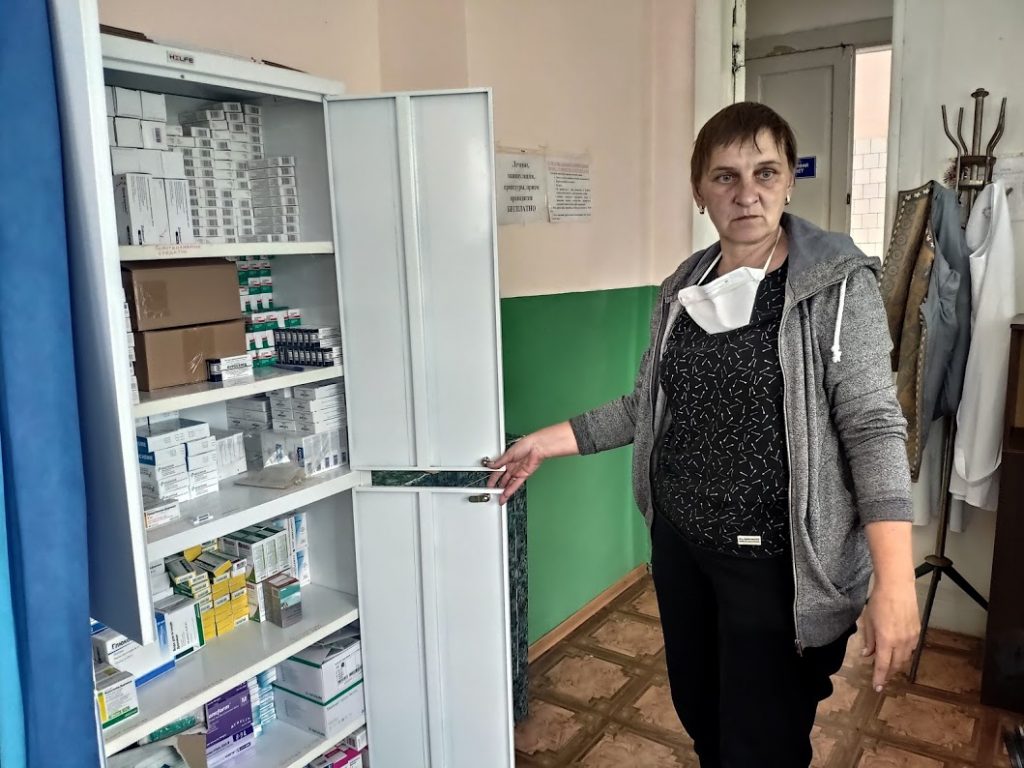
Conclusion
The Luhansk region has up to this day the lowest infection rate. Not a single fatality or an infected medical staff member has been reported. According to the members of the monitoring group, such dynamics are primarily due to the natural isolation of the region and timely preventative measures, which led to reduced social contacts and hampered the spread of COVID-19. Central and local self-governments have demonstrated the ability to respond quickly to emergencies and in cooperation with representatives of commercial and civil society sectors have provided for the basic needs of the designated hospitals. However, the needs of other healthcare facilities in the region are not even met by 50%, and in case the prognosed second wave of the pandemic happens and will have dynamics comparable to those that were seen in Lombardy, Italy, the medical sector in the Luhansk region will be paralyzed. It is too early for representatives of the central and local self-governments to relax, since the threat has been postponed, but has not disappeared. The time between the waves of COVID-19 should be used to strengthen the potential of healthcare facilities to address the issues that are presented in this report, and also to further enhance intersectoral cooperation, which has helped to improve the situation in the medical sector in the region significantly.
Appendix 1: Current needs of healthcare facilities in the Luhansk region
Acknowledging the efforts of the central and local self-governments, commercial enterprises and the civil society, to improve the situation in healthcare facilities in the Luhansk region, it is imperative to note that far from all needs of the hospitals of the first, second, and third lines are completely met. Given the probable second wave of the COVID-19 pandemic, the government, commercial and civil society sectors should provide healthcare facilities of the region with all means necessary for working with COVID-19 patients. Below, we provide a list of the primary needs of hospitals of the first, second, and third line (at the time of the monitoring visits). The assessment of these needs was provided by the management and the staff of these hospitals. The Charitable Foundation Vostok SOS is not responsible for the accuracy of this data. For more detailed information and the contact details of the surveyed individuals in these healthcare facilities, please call the number +38 093 145 57 88 or write us to [email protected].
Severodonetsk City Multidisciplinary Hospital:
1. Disposable masks – 500,000;
2. Protective screens – 50;
3. Disposable gowns – 500;
4. Protective suits – 1000;
5. Reusable masks – 10,000;
6. Protective goggles – 300
7. Medicines;
8. Ventilators – 6, 3 of them portable, 2 for children;
9. Pulse oximeters;
10. Contactless thermometers;
11.Patient monitors – 6;
12. ECG machines;
13.Oxygen concentrators – 10
Lysychansk Multidisciplinary Hospital:
1. Ventilators – 5;
2. Stationary pulse oximeters – 3 to 5;
3. Dispensers for intravenous injection – 10;
4. Patient monitors with the functionality of gas analysis – 5;
5. Personal protective equipment;
6. Blood gas analyzer;
7. High shoe covers – 5,000;
8. Disposable masks – 10,000;
9. Protective screens– 50;
10. Disposable gowns – 500;
11. Respirators – 500;
12. Disposable gloves – 20,000
13. X-ray machine – 2;
14. Oxygen concentrators – 10
Starobilsk Regional Territorial Medical Association:
1. Disposable headcovers – 500;
2. Medicines;
3. Antiseptics;
3. Inhalers;
4. Large garbage bags (160 litres);
5. 70% alcohol solution;
6. Ventilator – 1
7. Oxygen concentrators – 2
8. Protective screens – 20
Milovsky Central Regional Hospital:
1. Respirators – 200;
2. Protective goggles;
3. Reusable protective suits – 200;
4. Disposable gowns – 200;
5. Disinfectants;
6. Functional beds – 4;
7. Equipment for the intensive care unit;
8. Mammogram;
9. Ventilator – 1;
10. Patient monitor – 1;
11. Oxygen concentrators – 4
Stanichno-Luhansk Regional Territorial Medical Association and its Petropavlivsk department
1. Personal protective equipment;
2. Ventilators – 6;
3. Oxygen concentrators – 10;
4. Hand sanitizers – 30;
5. Disposable gowns – 2000;
6. Reusable protective suits – 50;
7. Respirators – 575;
8. Disinfectants – 30.
Popasna Central Regional Hospital:
1. X-ray machine – 1;
2. Oxygen concentrator – 2;
3. Patient monitor – 1;
4. Disinfectants – 26 kg;
5. Antiseptics – 20 liters;
6. Disposable masks – 7,000;
7. Protective screens – 100;
8. Disposable gowns – 200;
9. Protective suits (reusable) – 100;
10. Protective suits (disposable) – 300;
11. Respirators – 200;
12. Computer tomographic scan machine;
13. Pulse oximeters;
14. ECG machine
15. Nasal catheters;
16. Systems;
17. Gauze netting and other consumables;
Kreminna Multidisciplinary Hospital:
1. Ventilator (high class) – 1;
2. Disinfectants and hand sanitizers – 70 liters;
3. Disposable masks – 5000;
4. Protective screens – 100;
5. Disposable gowns – 200;
6. Protective suits – 40;
7. Protective goggles – 134;
8. Respirators – 136
9. Mammogram – 1;
10. Fibrogastroscope;
Novopskov Territorial Medical Association
1. Disinfectants;
2. Contactless thermometers – 2;
3. Pulse oximeters – 3
4. Oxygen concentrators – 3;
5. Disinfectants for motor vehicles;
6. Fuel to transport material for PCR testing;
7. Capnogram;
8. Spatulas and swabs for sampling material for PCR testing
Markivka Multidisciplinary Hospital
1. Ventilators – 3;
2. Mobile x-ray machine – 1;
3. Patient monitors – 1;
4. Disinfectants and hand sanitizers – 50 litres;
5. Long protective gloves – 2000;
6. Disposable masks – 8640;
7. Protective screens (high quality) – 20;
8. Disposable gowns – 270;
9. Protective suits – 270;
10. Respirators – 1080;
Bilovodsk Multidisciplinary Hospital
1. Apparatus for non-invasive oxygen therapy;
2. Breathing masks;
3. Nasal cannulas;
4. Oxygen concentrators – 5;
5. Blood gas analyzer – 1;
6. Hand sanitizers – 300;
7. Protective gloves – 10,000;
8. Disposable masks – 10,000;
9. Protective screens – 50;
10. Disposable gowns – 300;
Abbreviations, used in the text:
- COVID-19 – Coronavirus disease 2019
- ECG – Electrocardiogram
- PCR – Polymerase Chain Reaction
- KNP – Non-profit municipal enterprise
Composition of the monitoring group:
- Kostiantyn Rieutskyi – Executive Director of the Charitable Organization Vostok-SOS
- Yulia Krasilnykova – Head of the Board of the Charitable Organization Vostok-SOS
- Yevhen Vasyliev – Program Coordinator for Human Rights Monitoring and Documentation of the Charitable Organization Vostok-SOS
- Yulia Kishenko – Educational Program Coordinator of the Charitable Organization Vostok-SOS
- Daniil Popkov – Lawyer of the Charitable Organization Vostok-SOS
- Julia Samokhvalova – Grants and Fundraising Manager of the Charitable Organization Vostok-SOS
- Oleksandra Voroshilova – Coordinator of the Severodonetsk office of the Charitable Organization Vostok-SOS
- Serhii Shpylievoi – Lawyer of the Charitable Organization Vostok-SOS
Special thanks for help in preparation of the monitoring mission and processing the collected data go to: Svitlana Batsyukova, Serhiy Milman, and Andriy Chernousov.
The translation of this report into English was completed with contributions from: Mischa van Diepen, Julia Samokhvalova, Svitlana Batsyukova and Thomas David Howard.
The monitoring mission was conducted with the support of the Helsinki Foundation for Human Rights (Poland) and DRA (Germany)
Download the full PDF report
View the full report online
For additional information please contact:
+38 093 145 57 88



